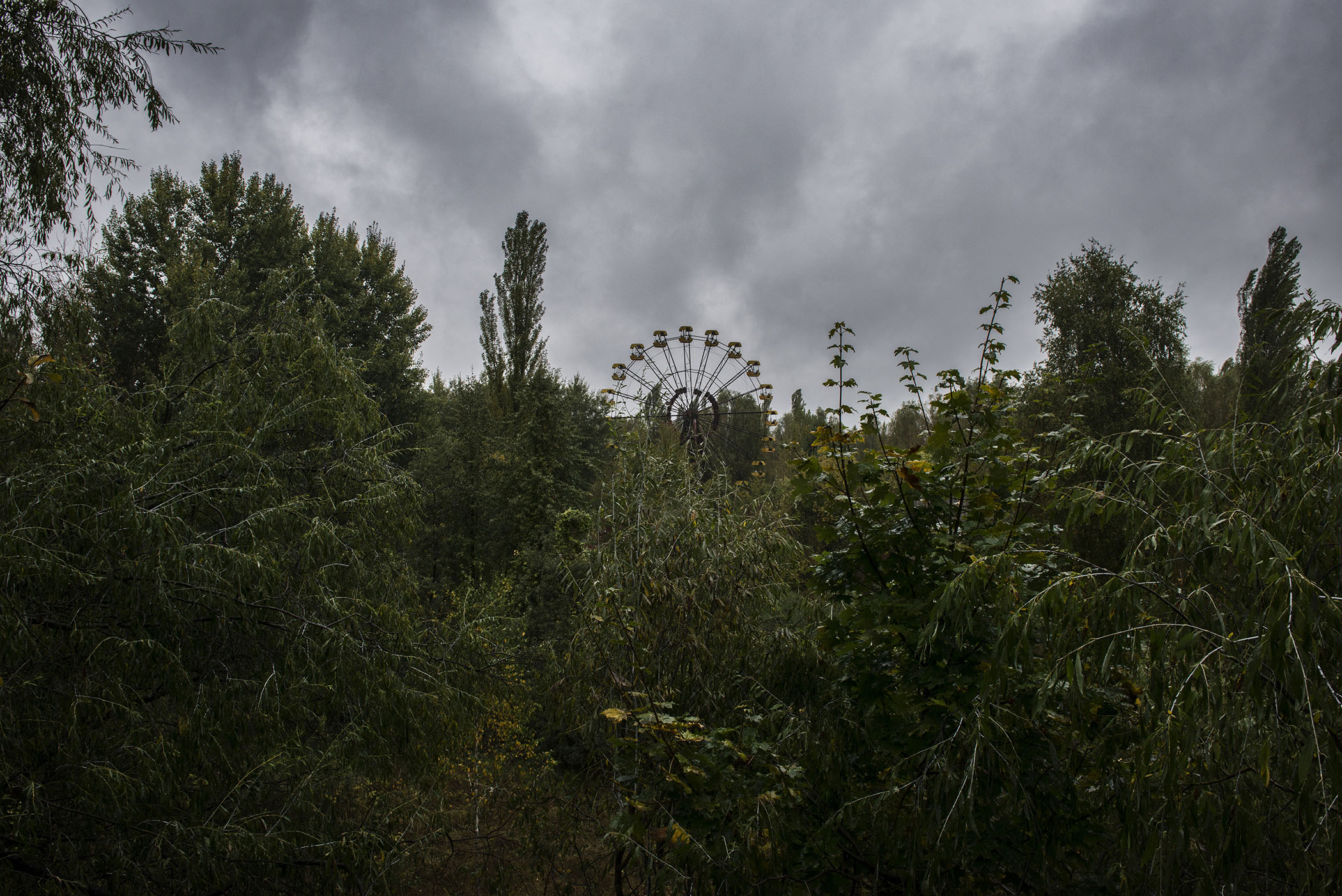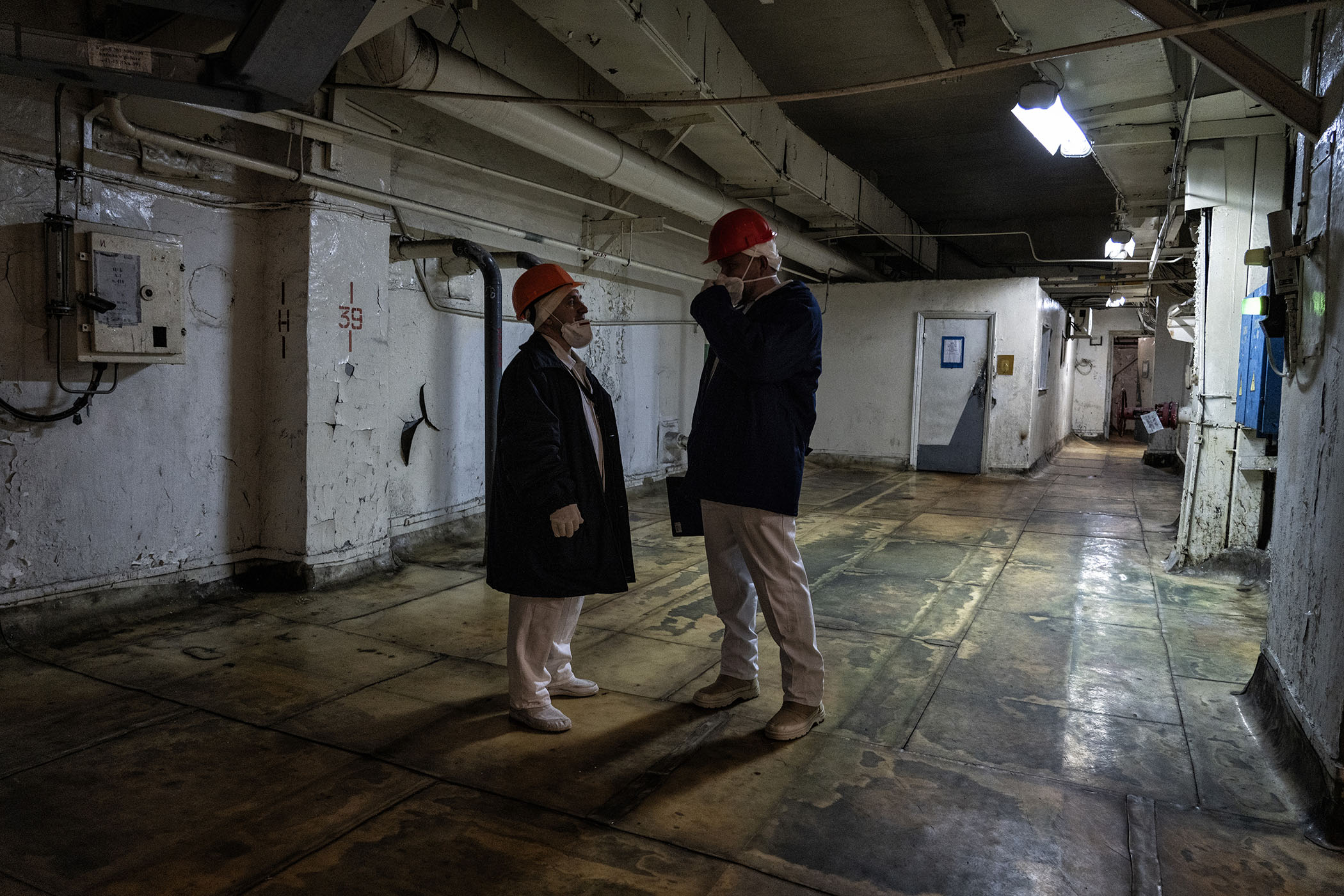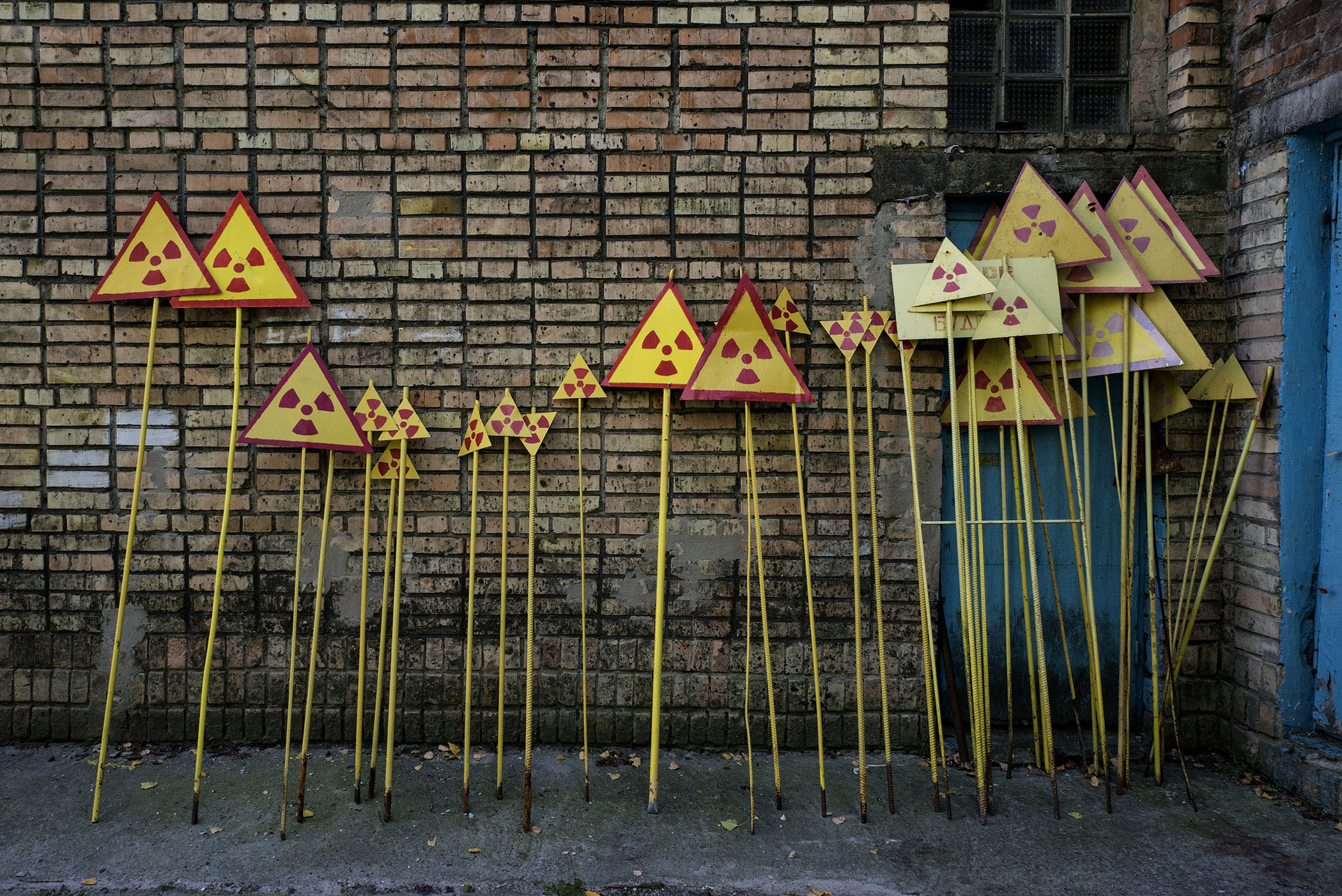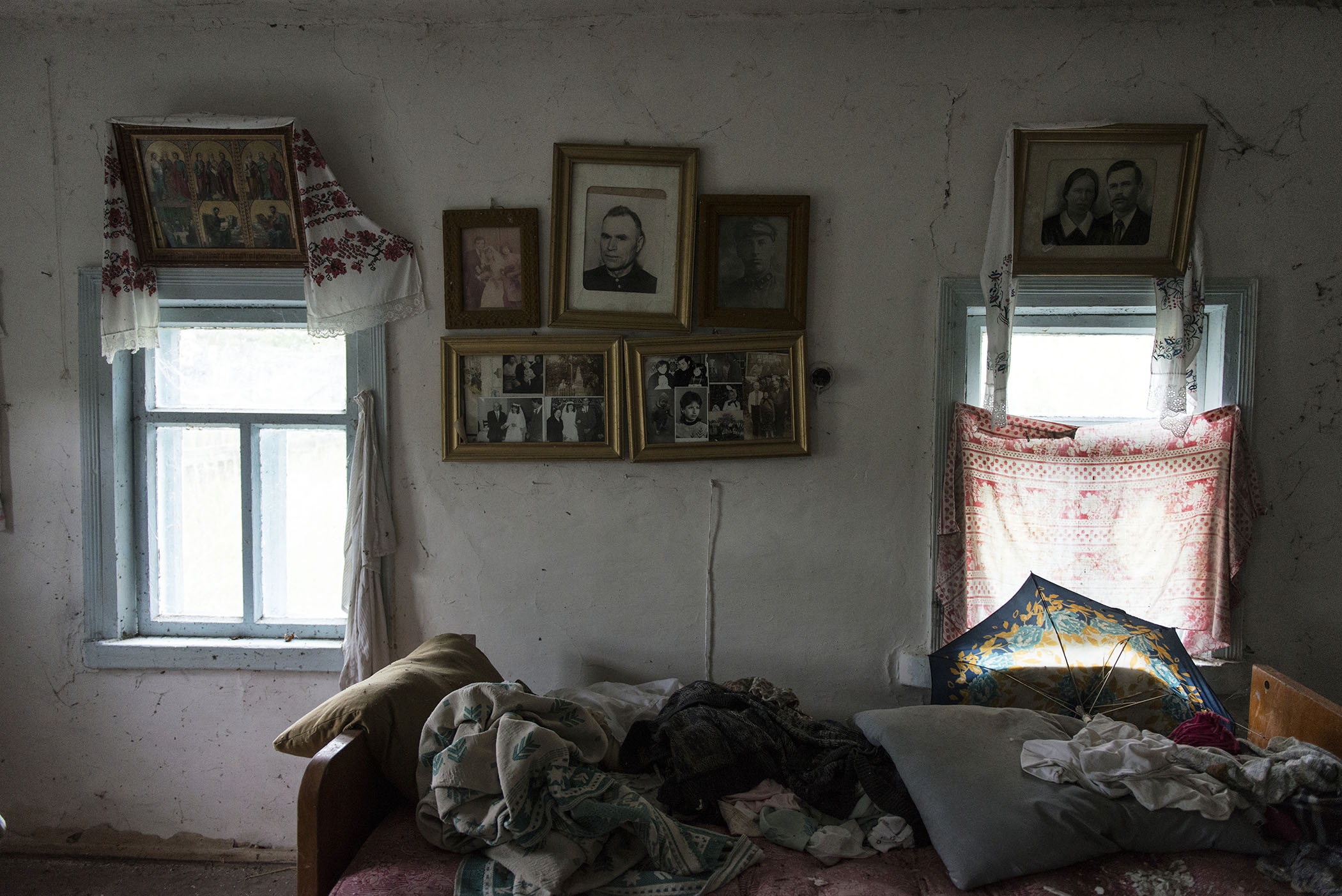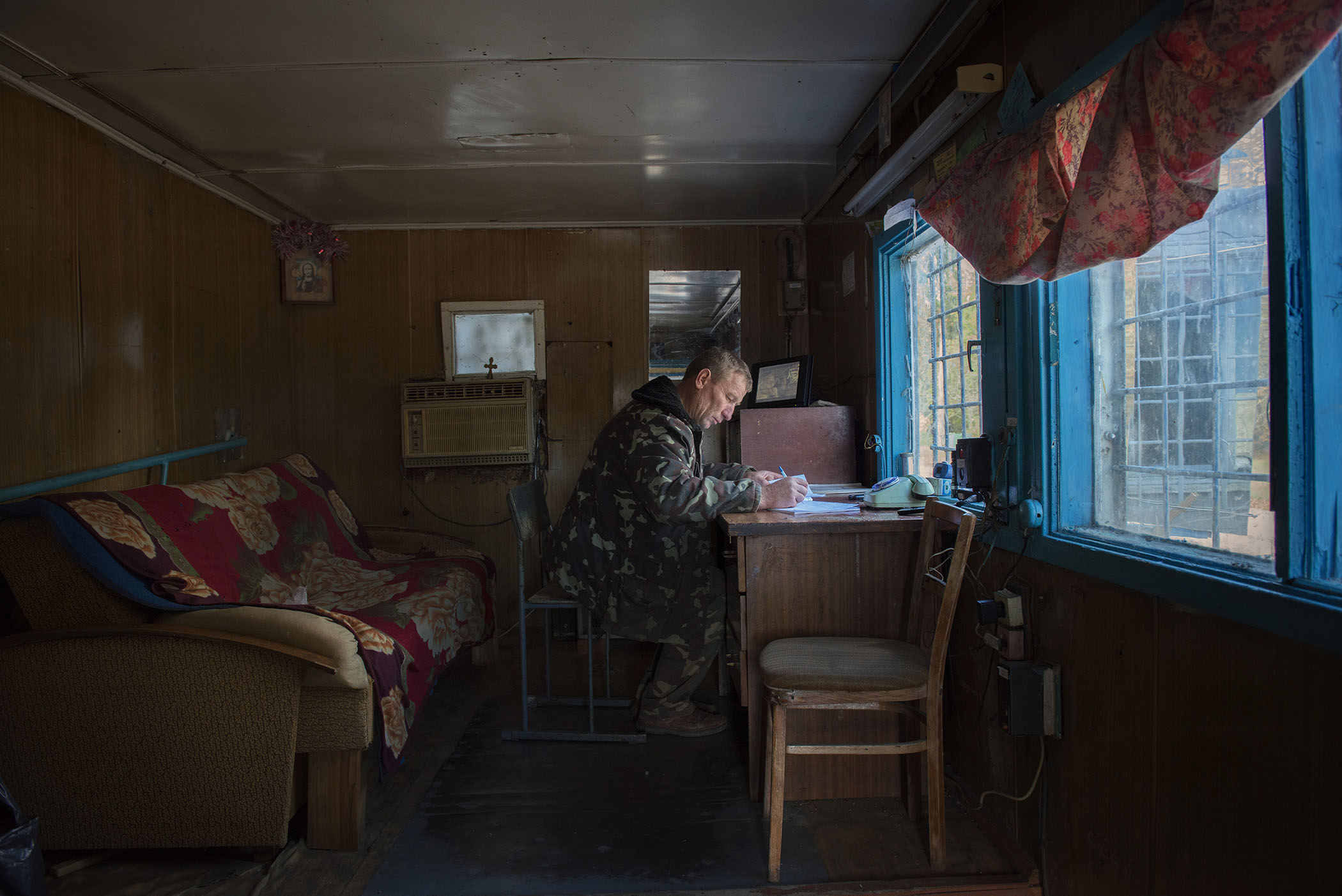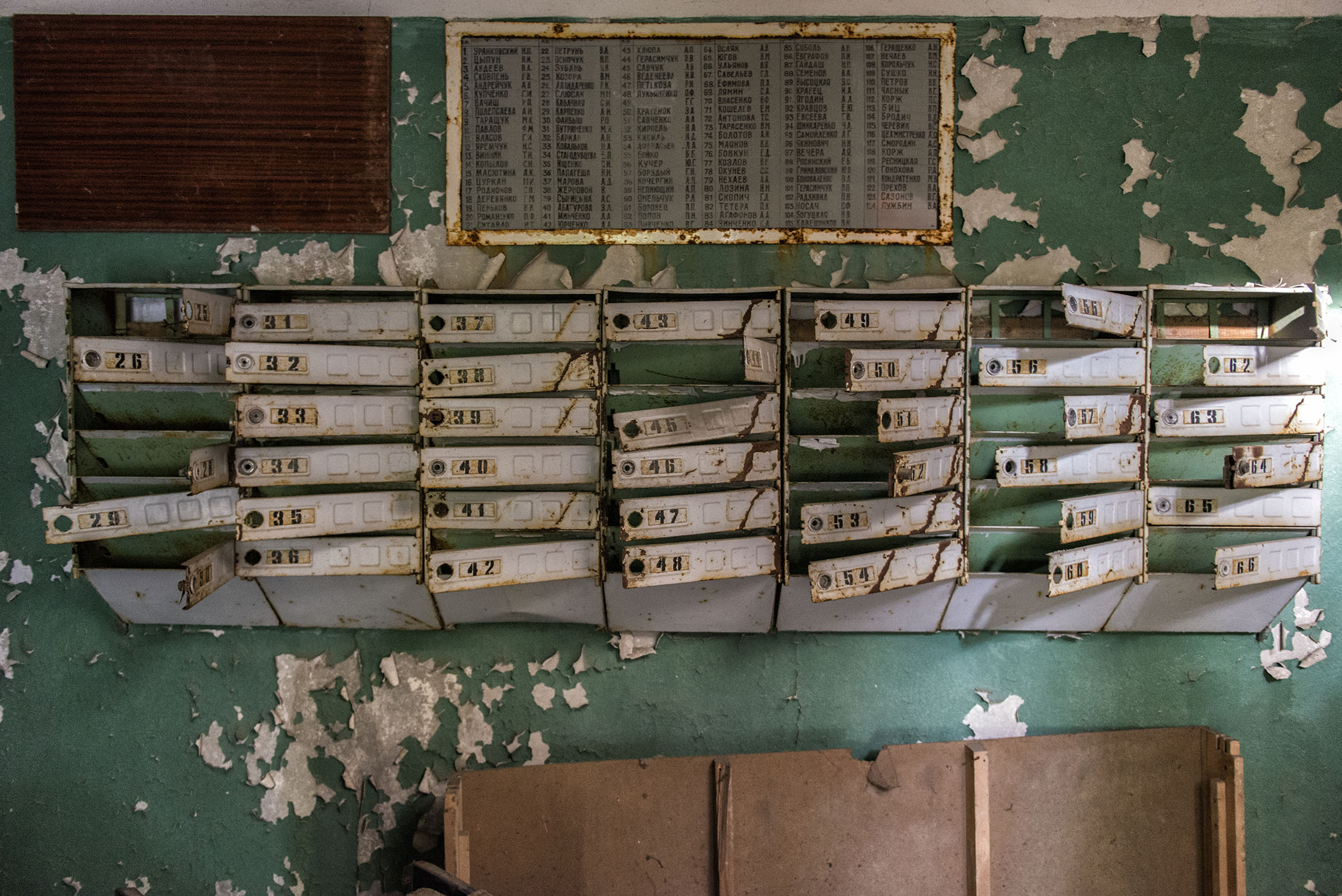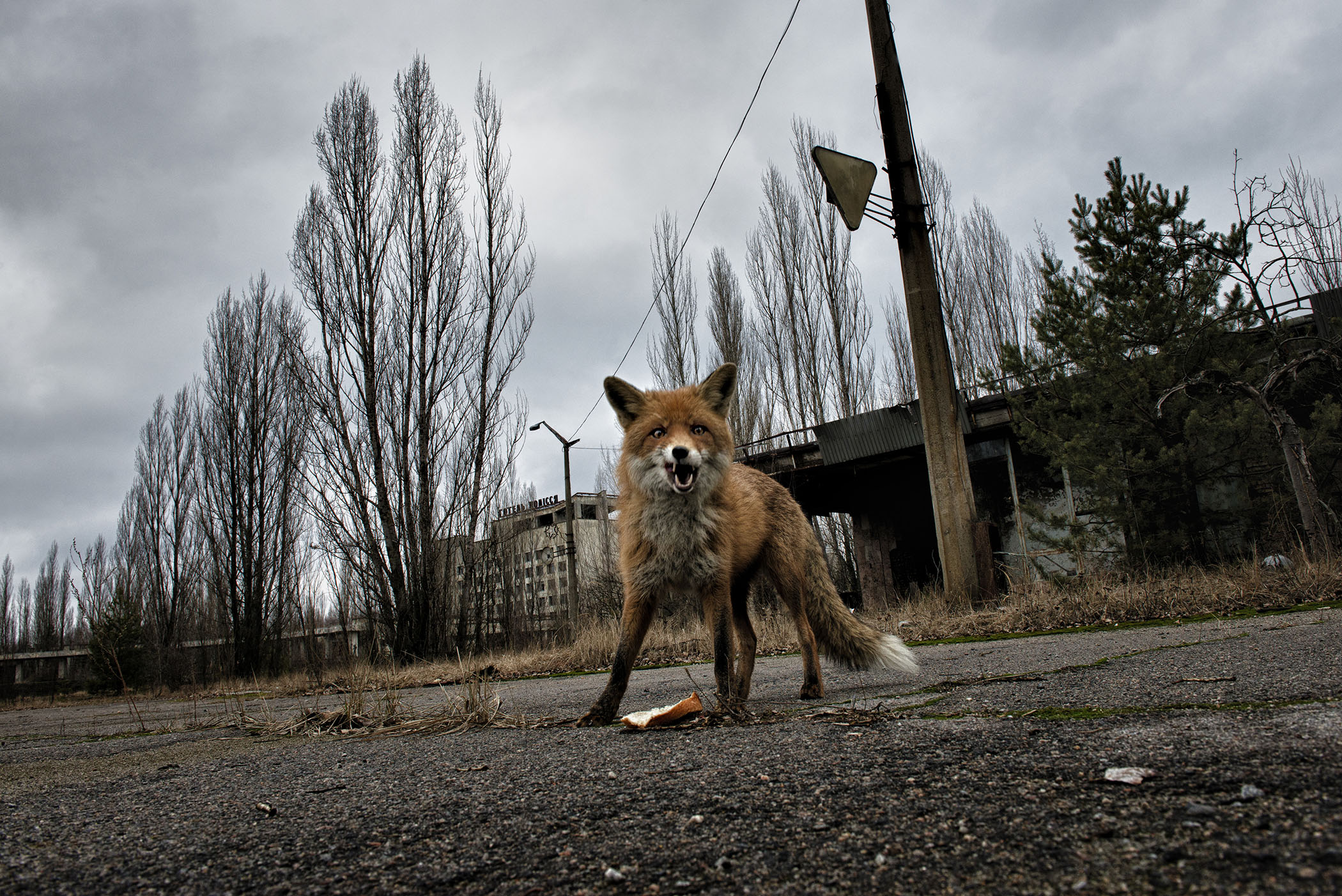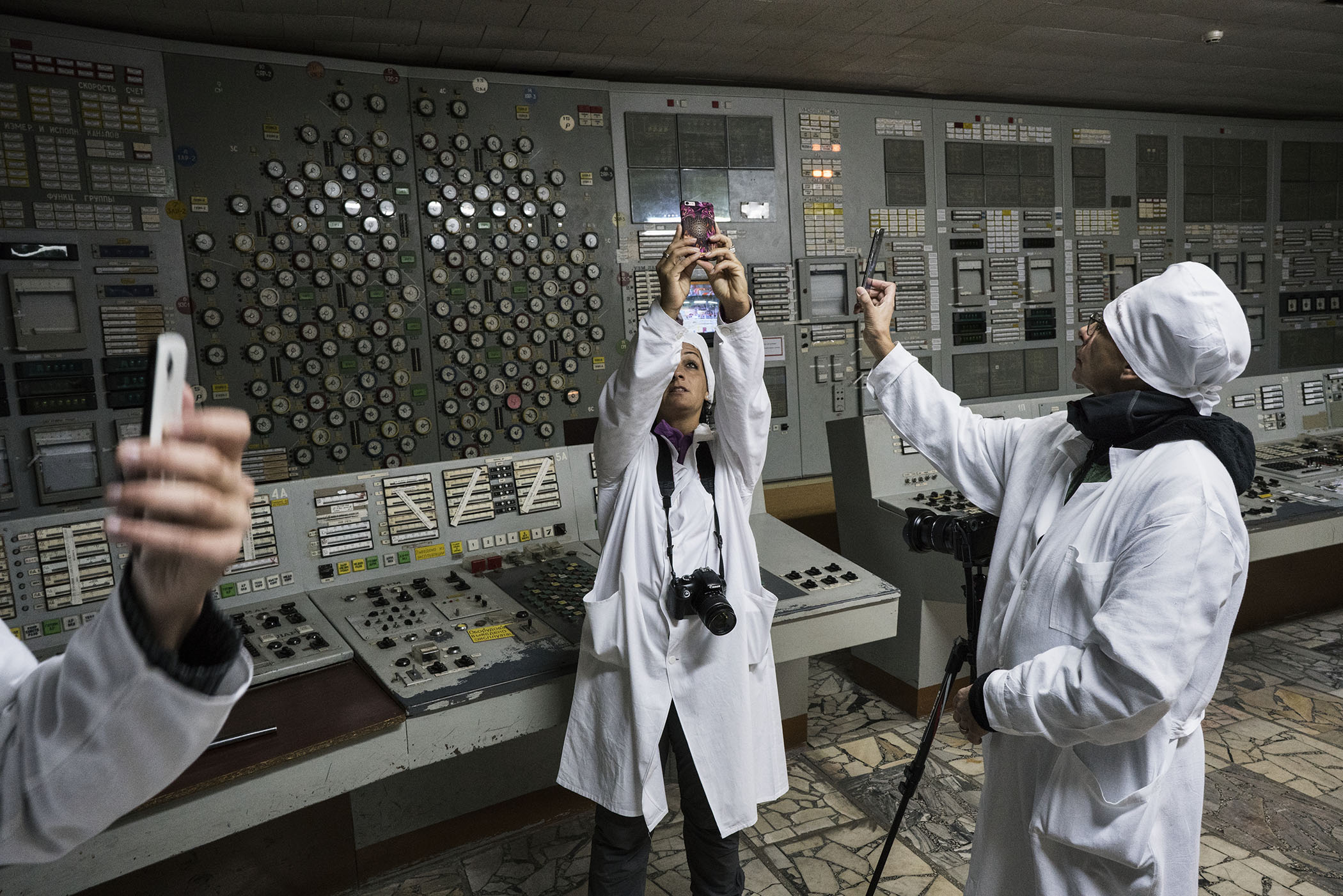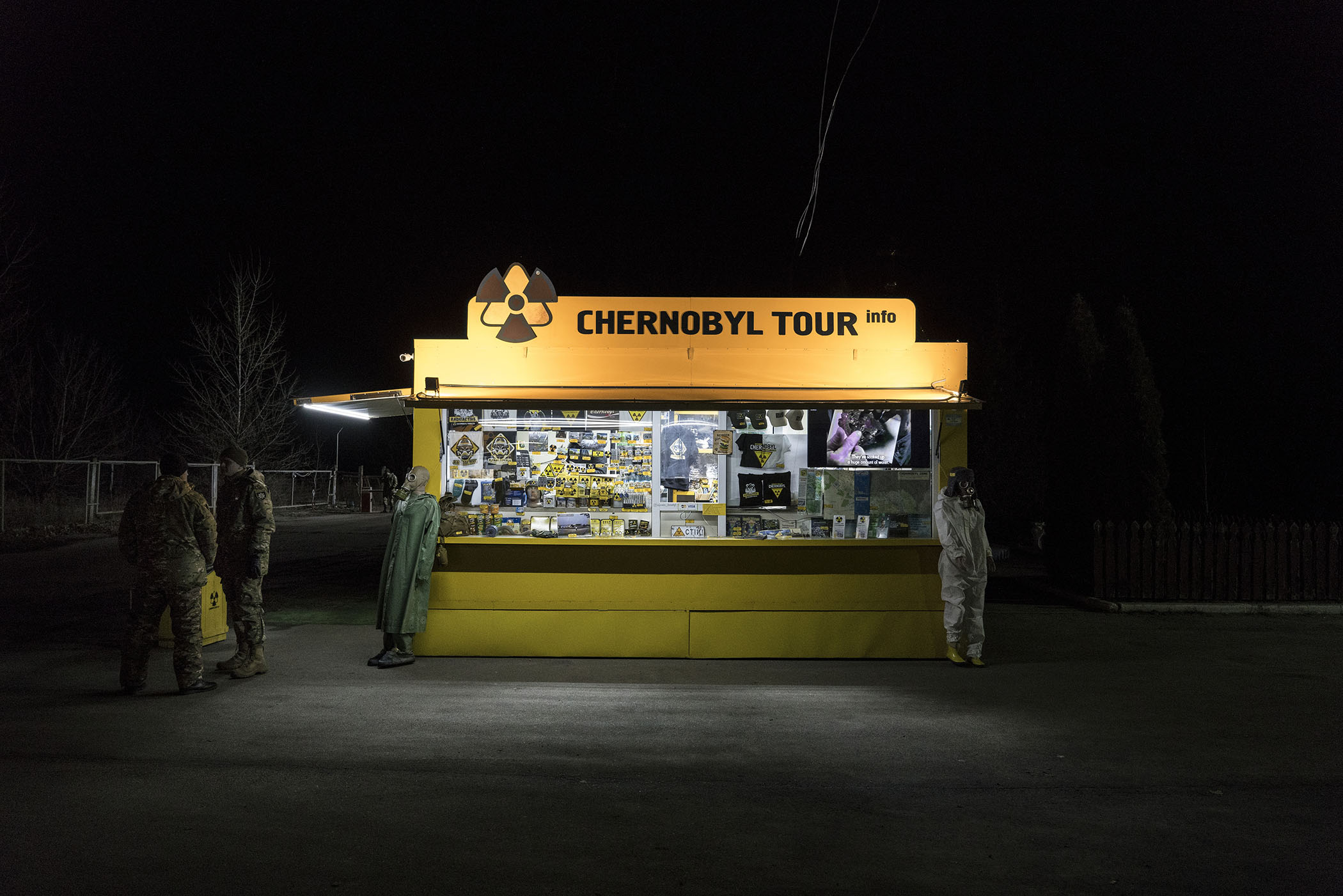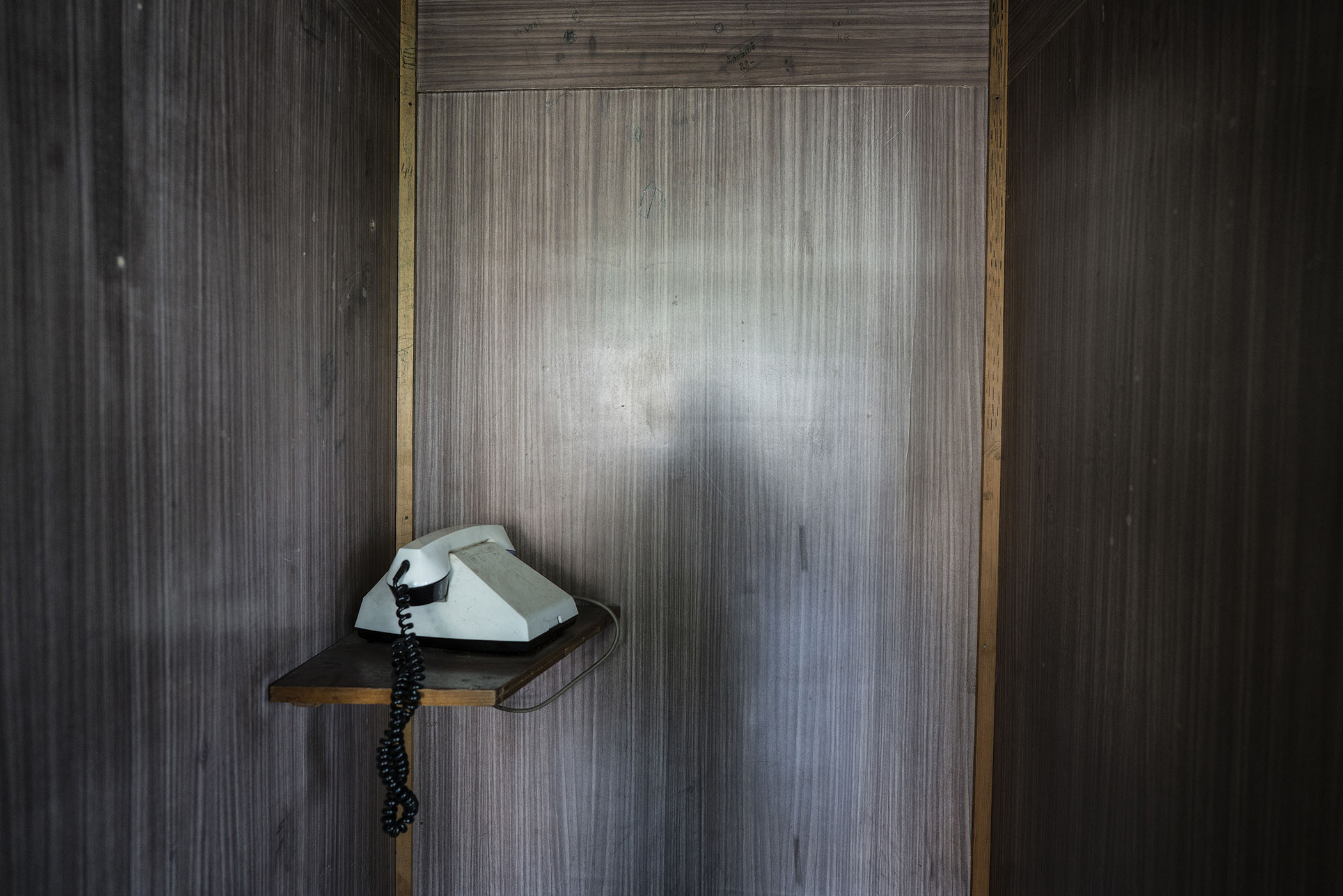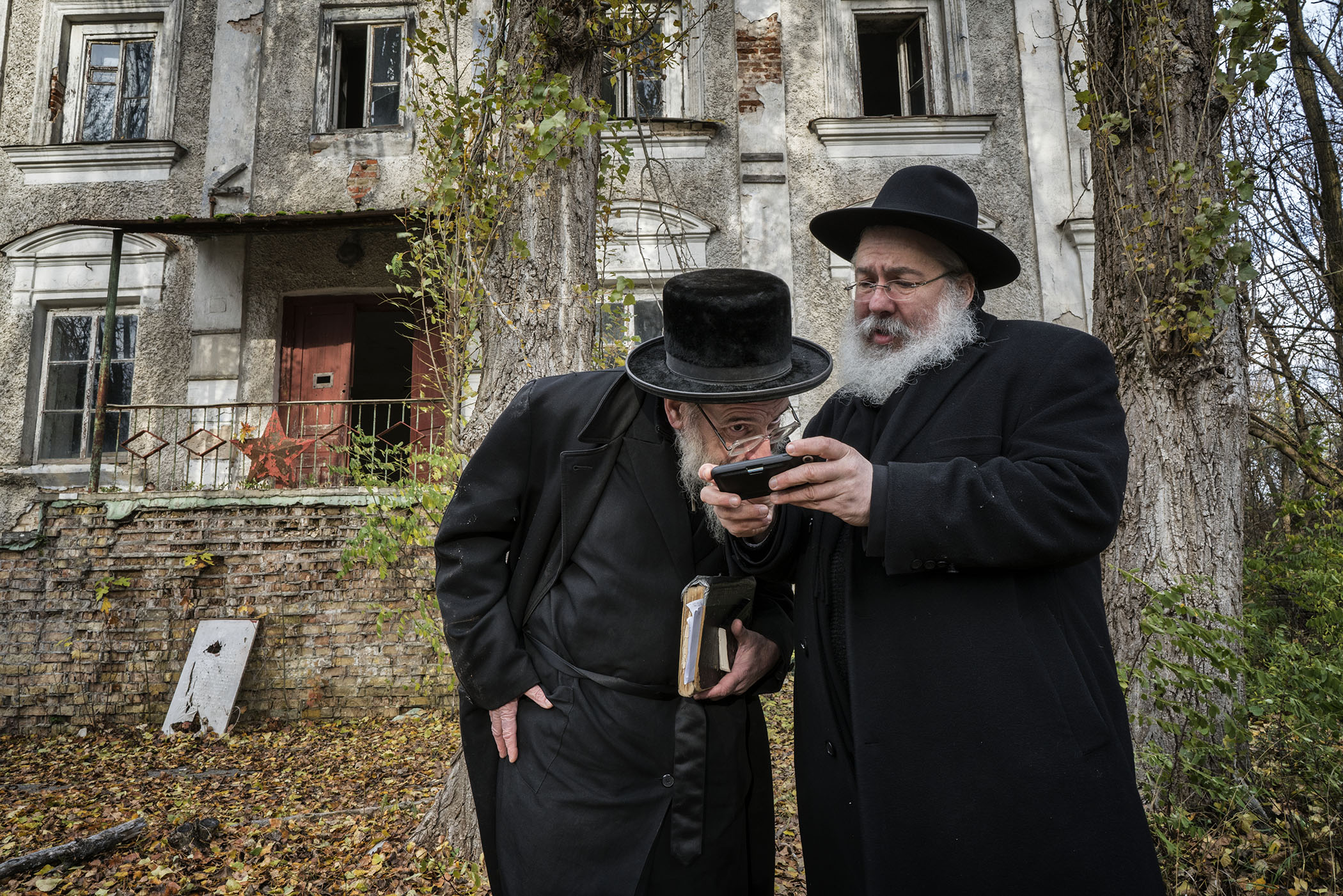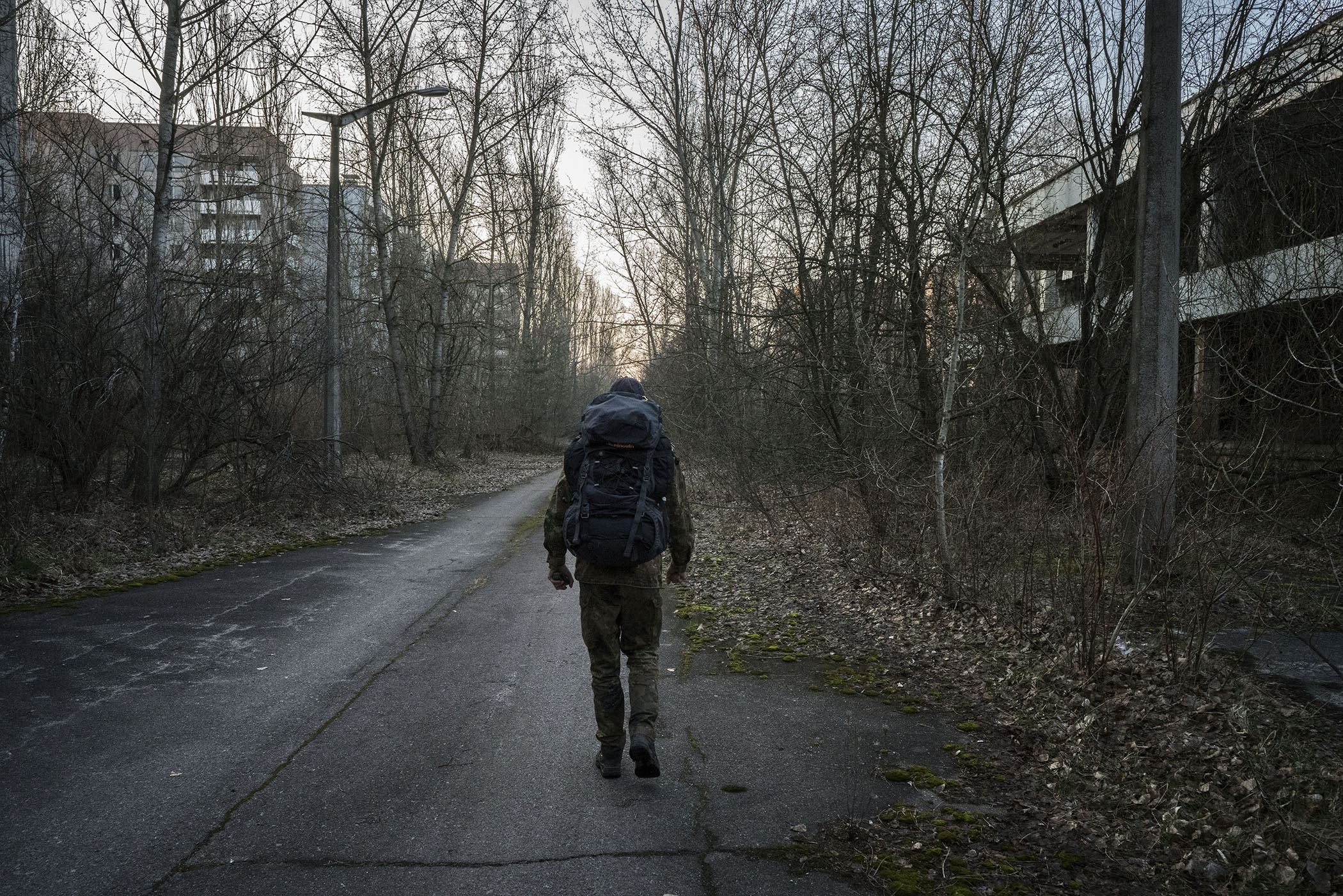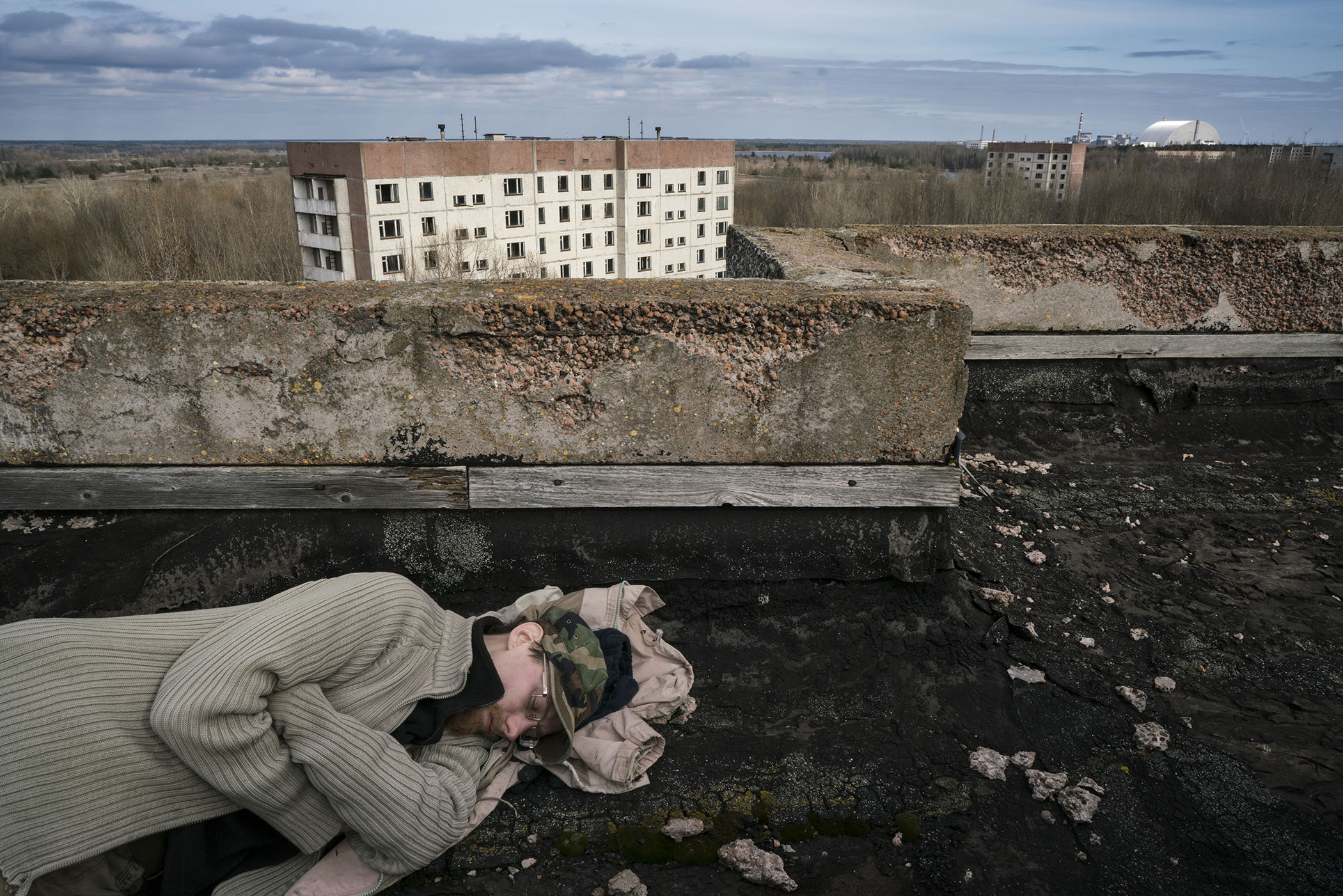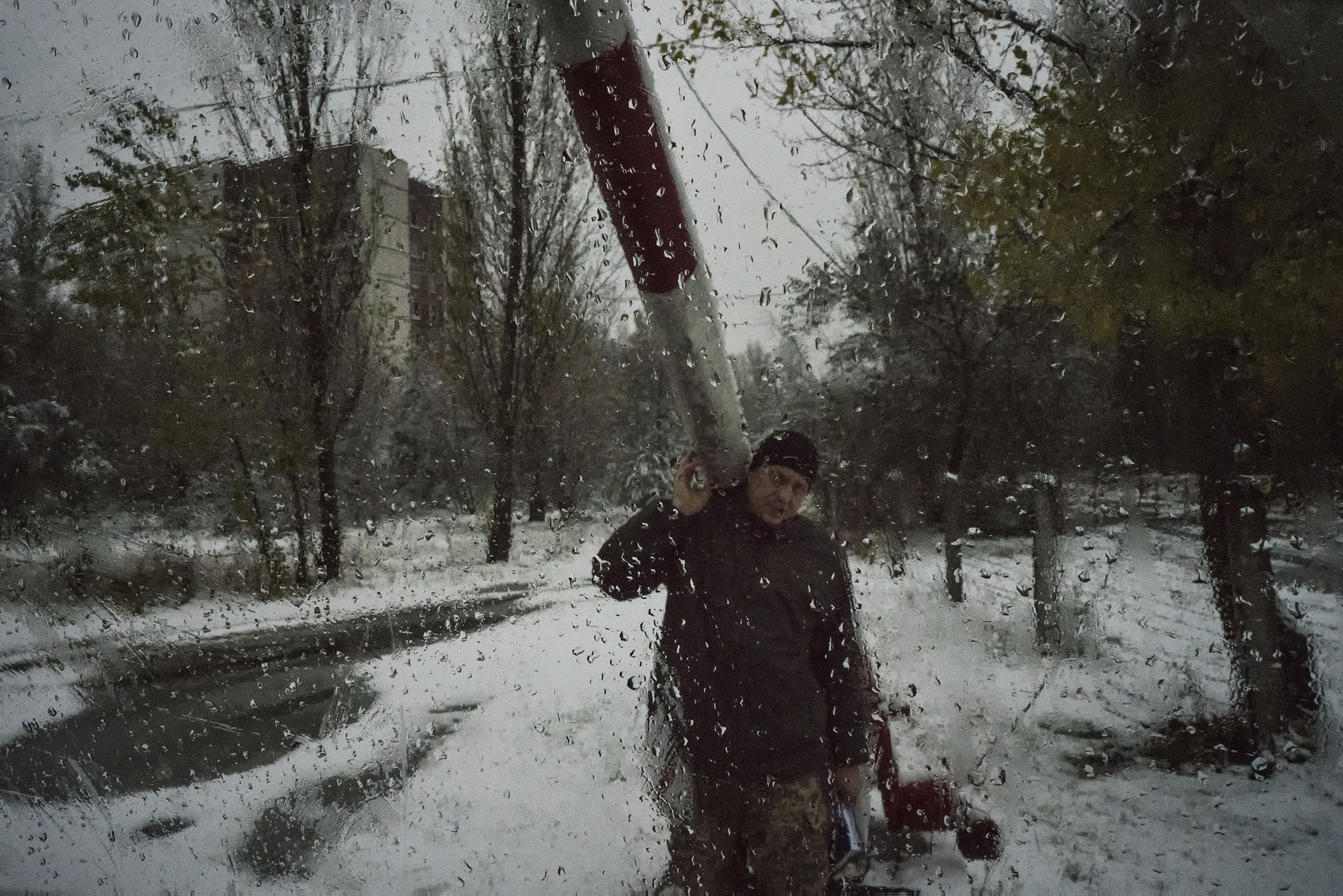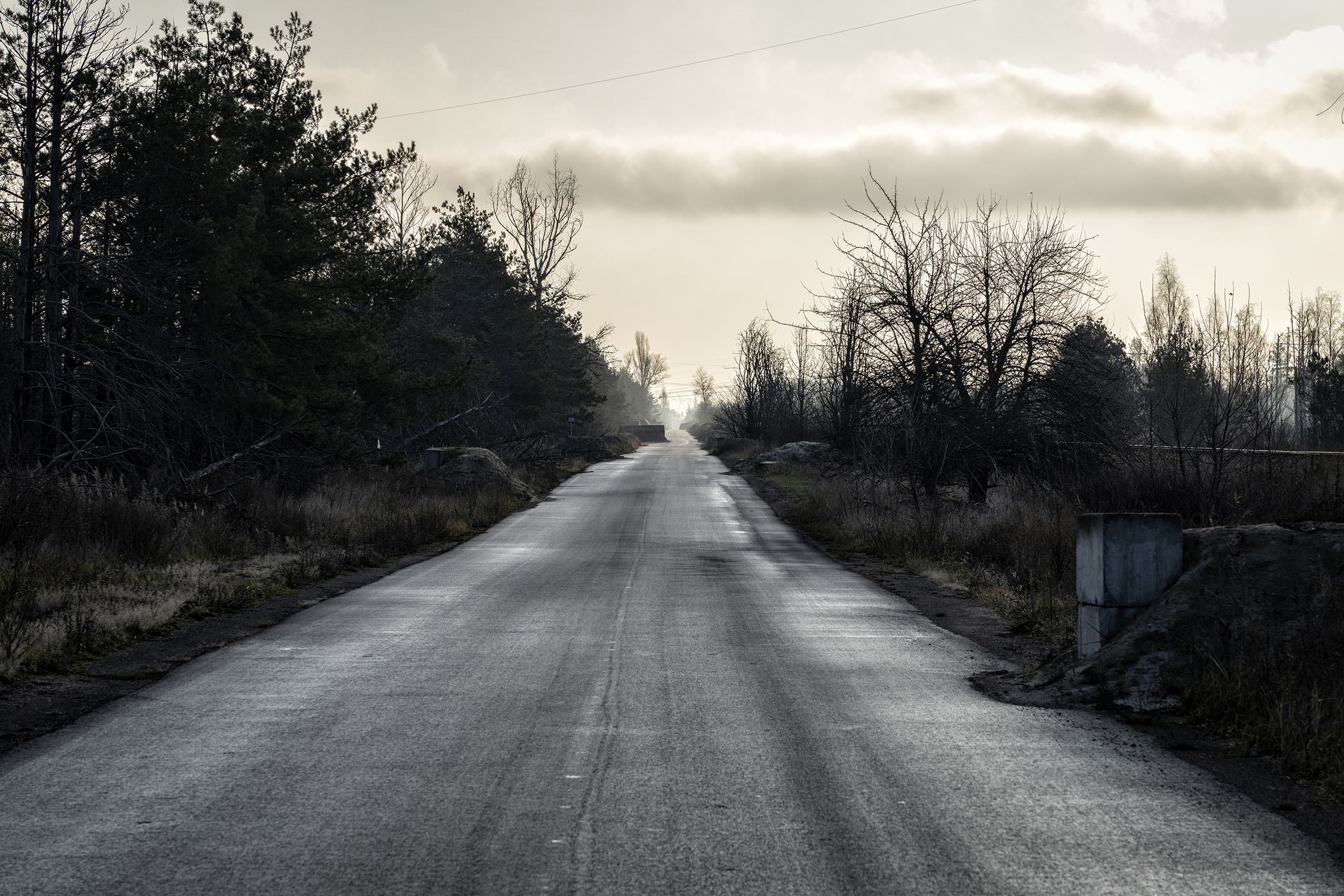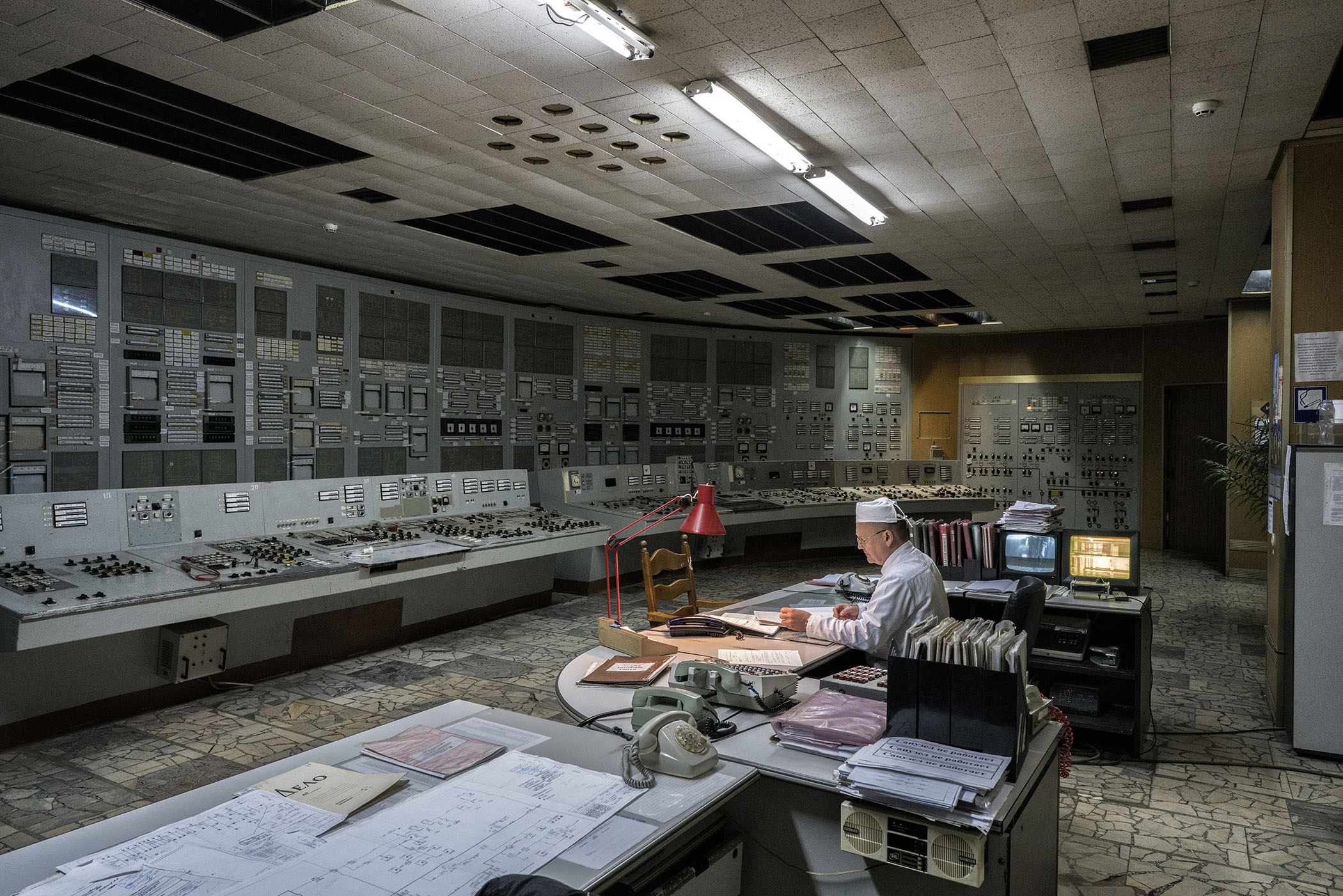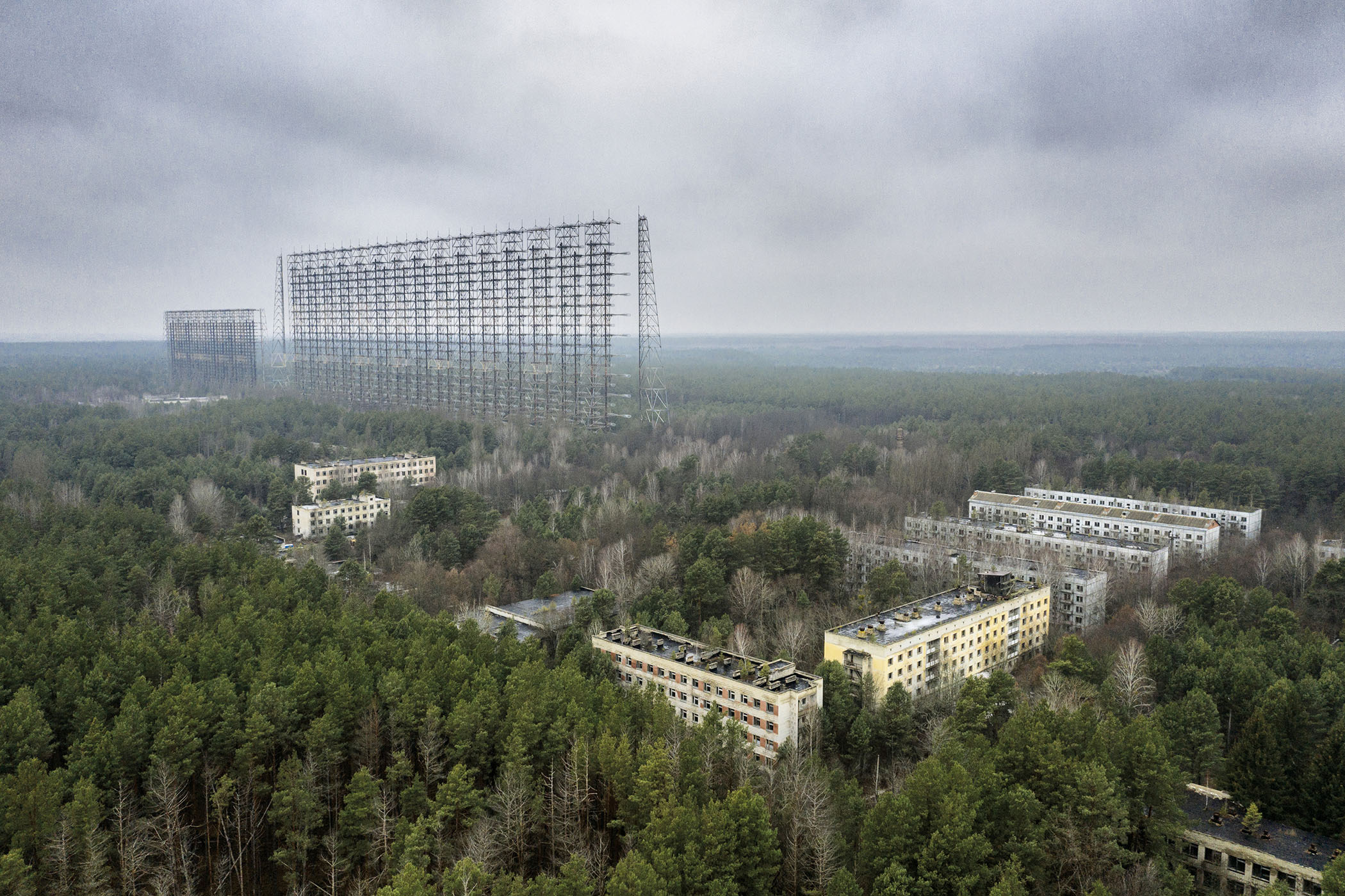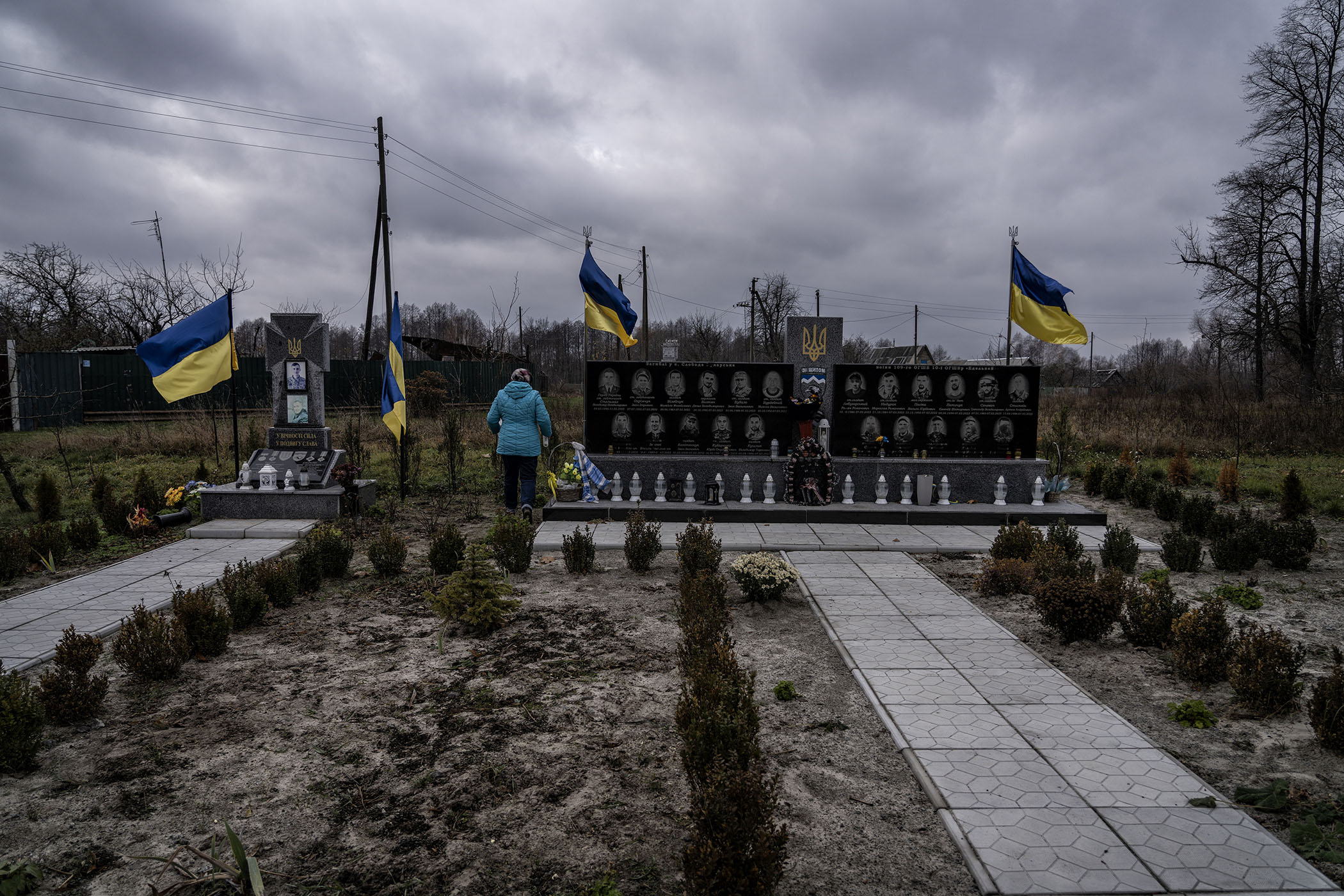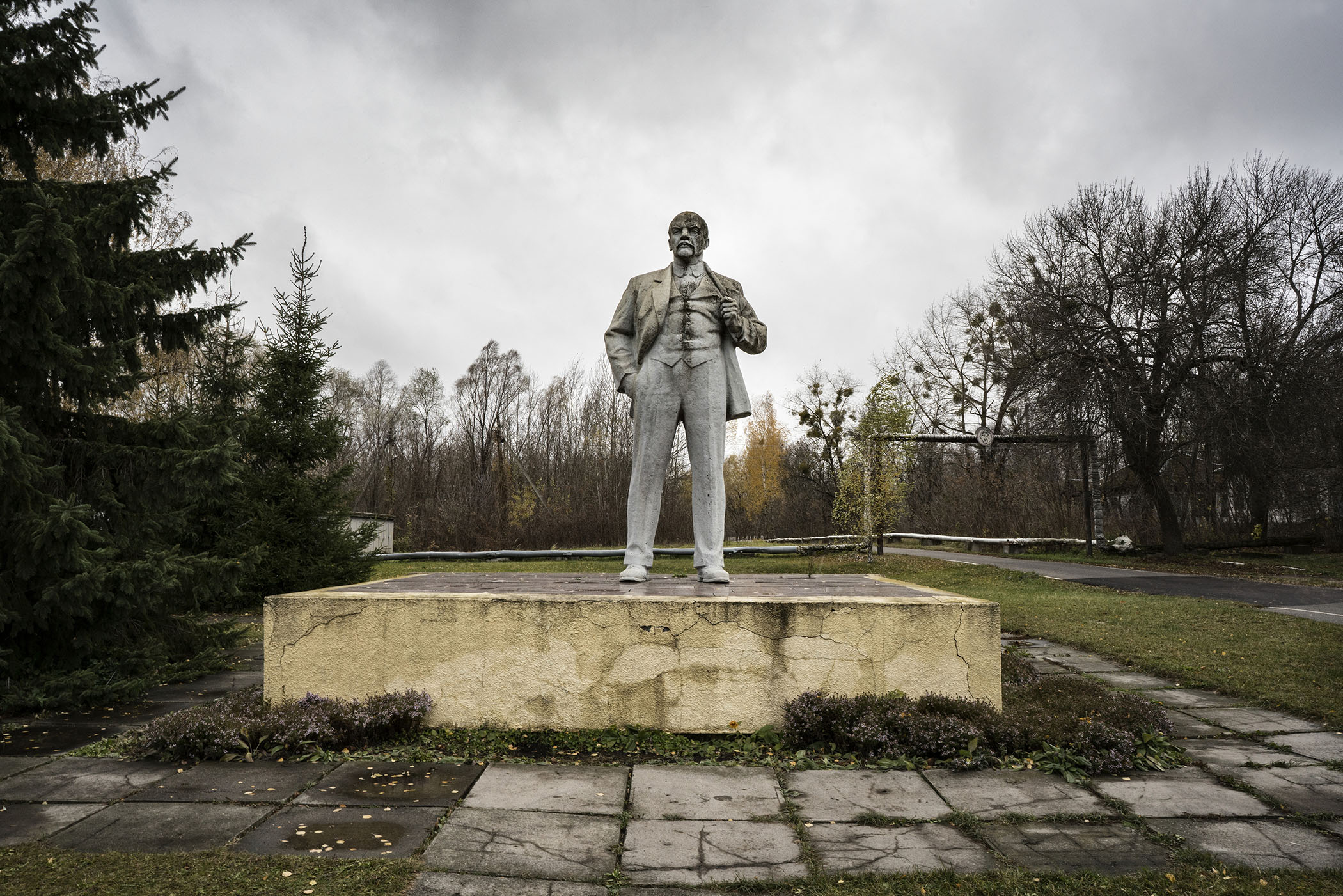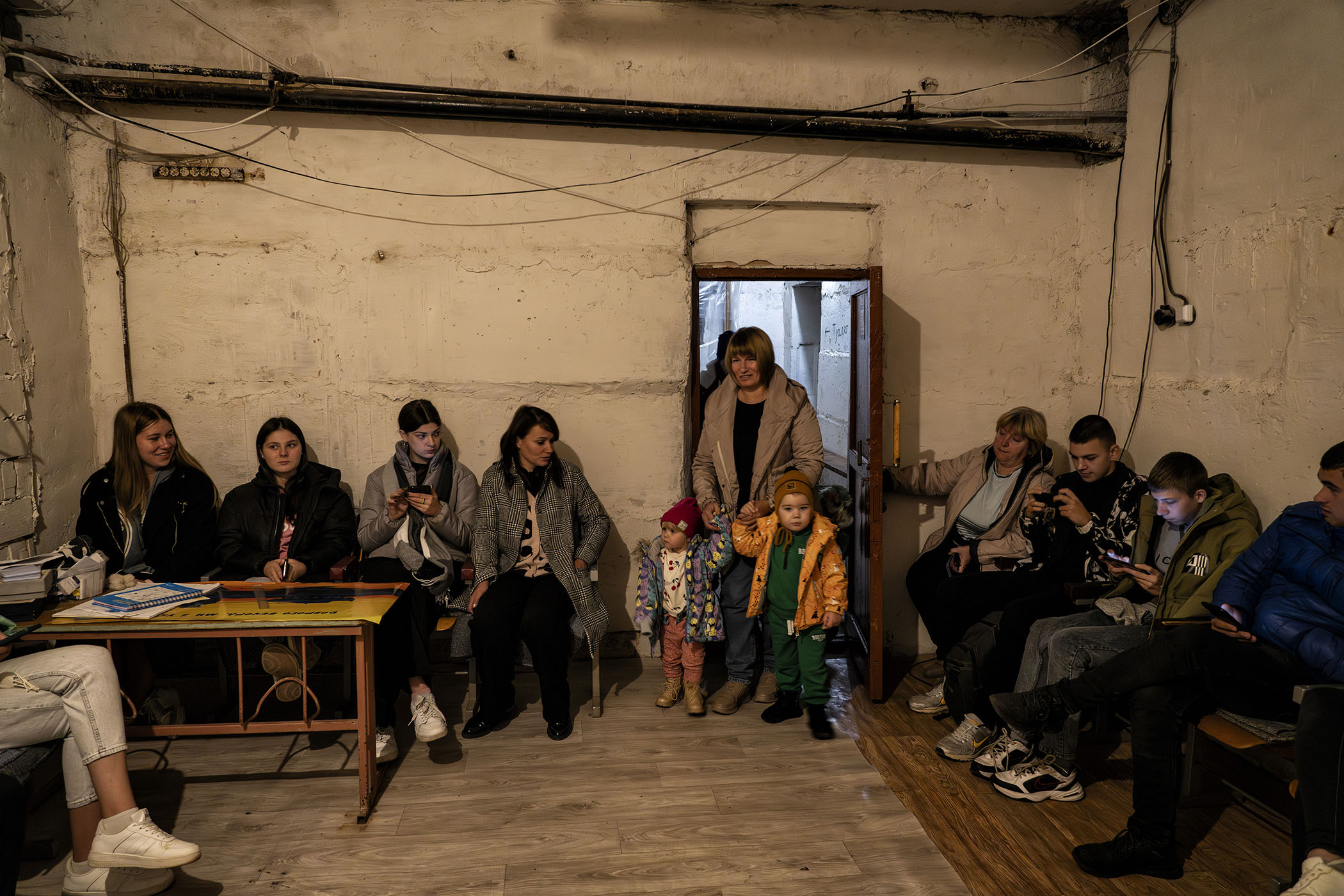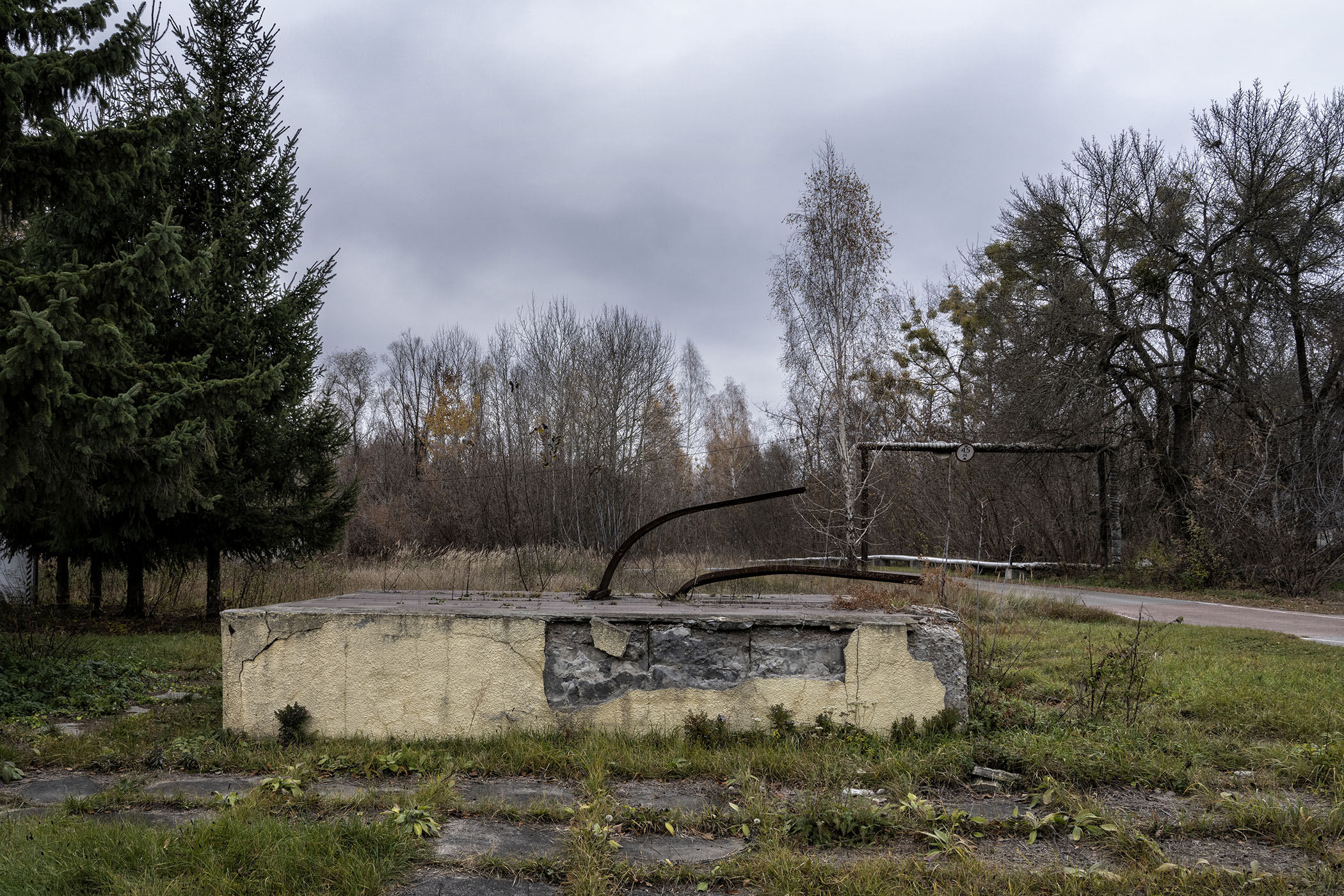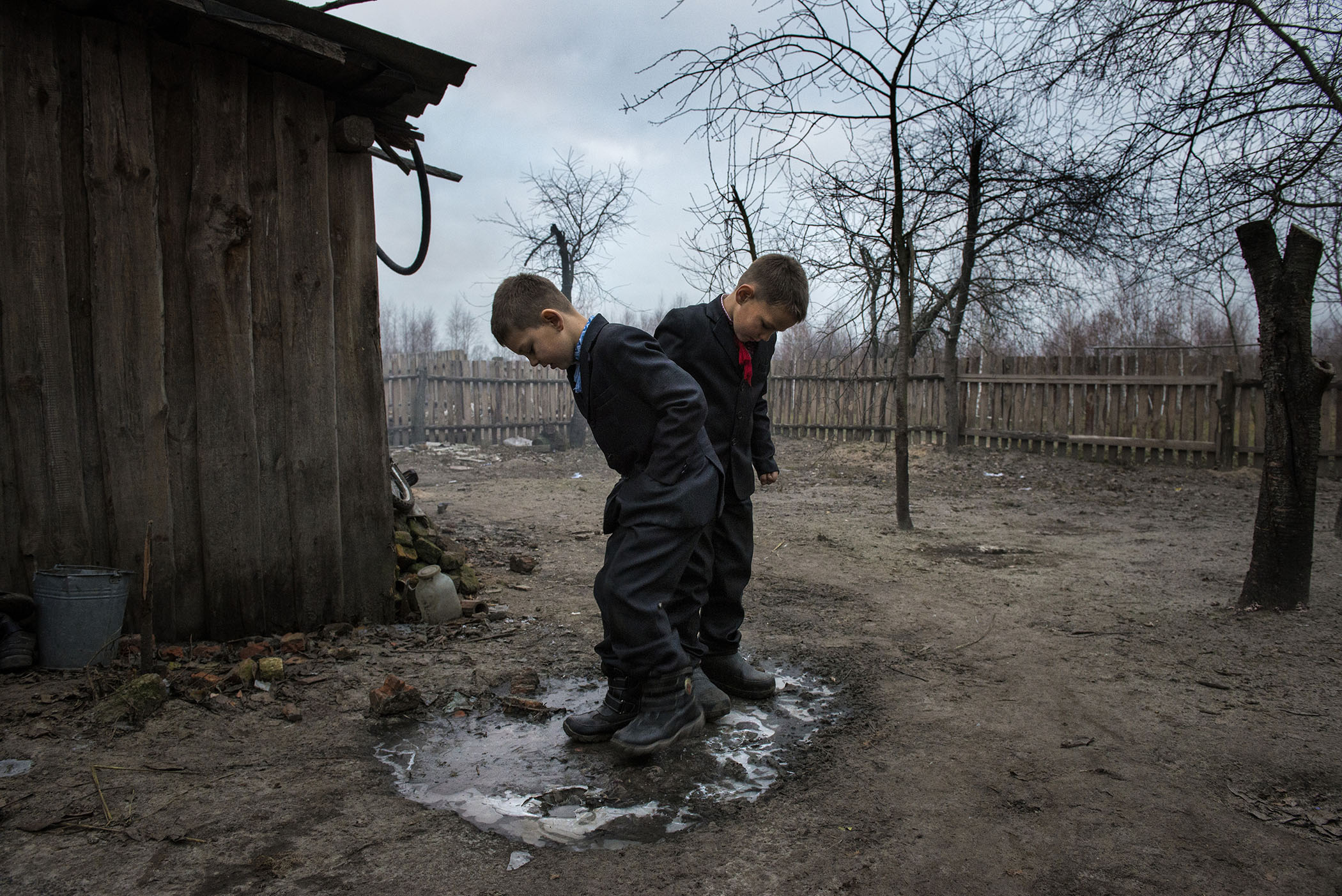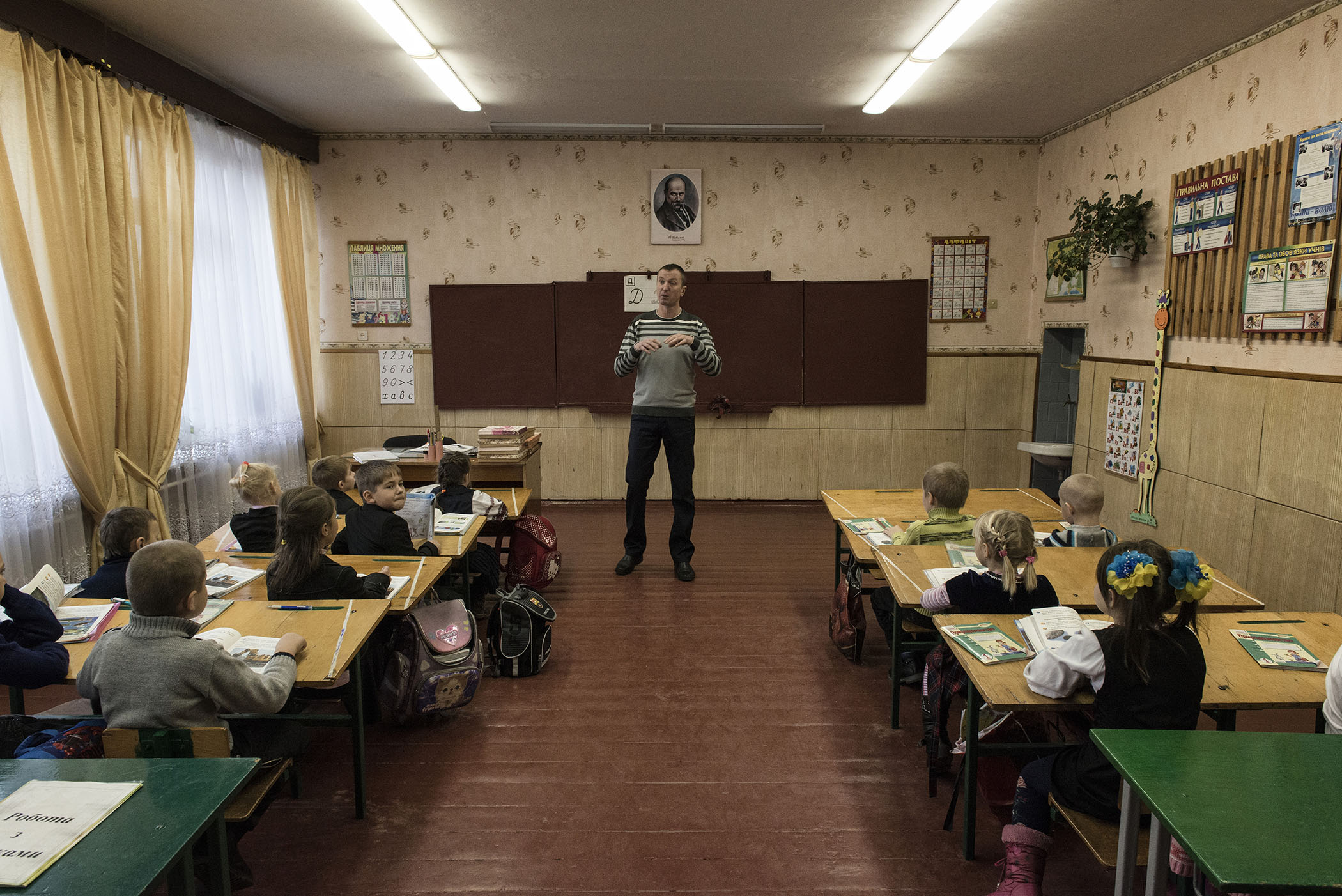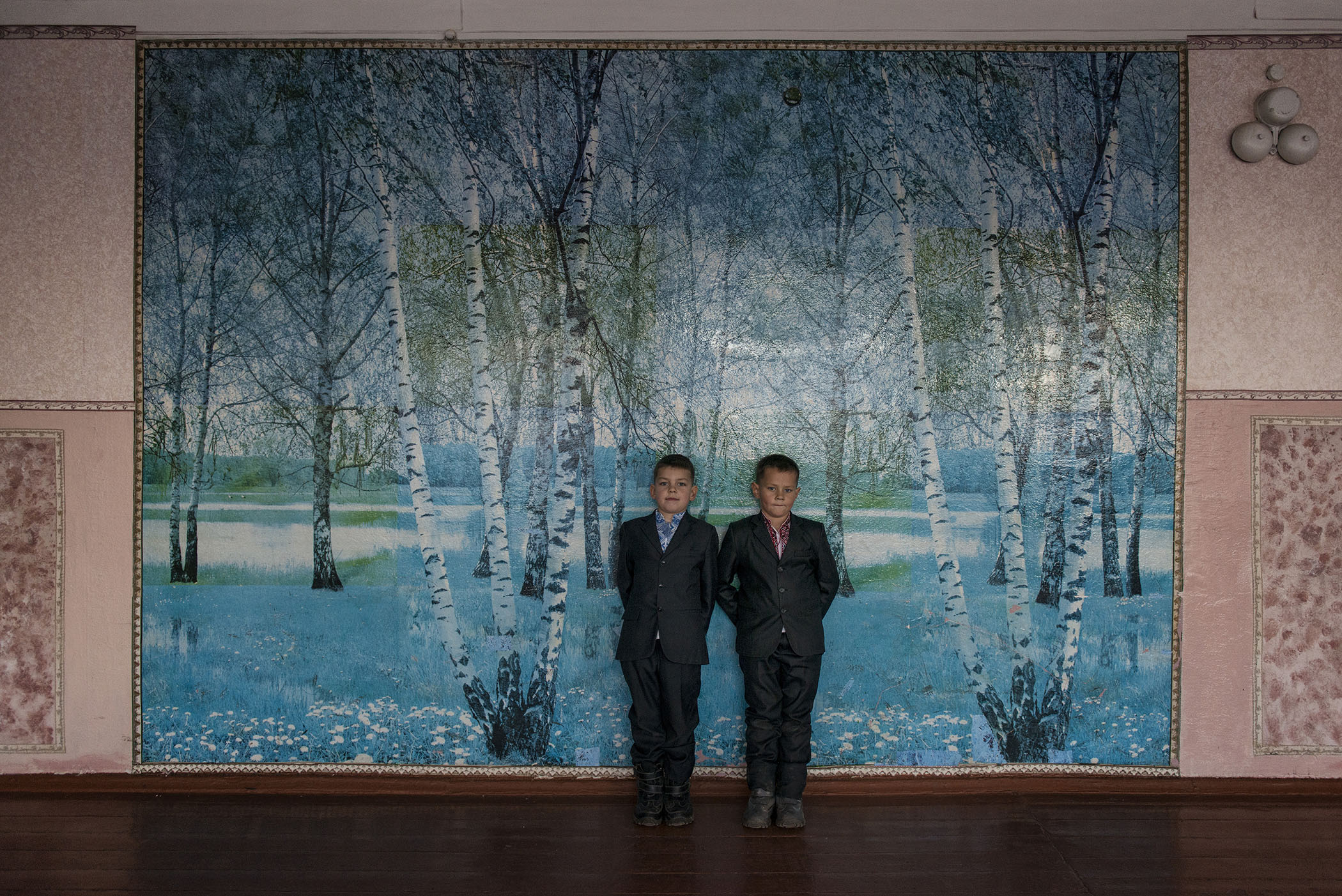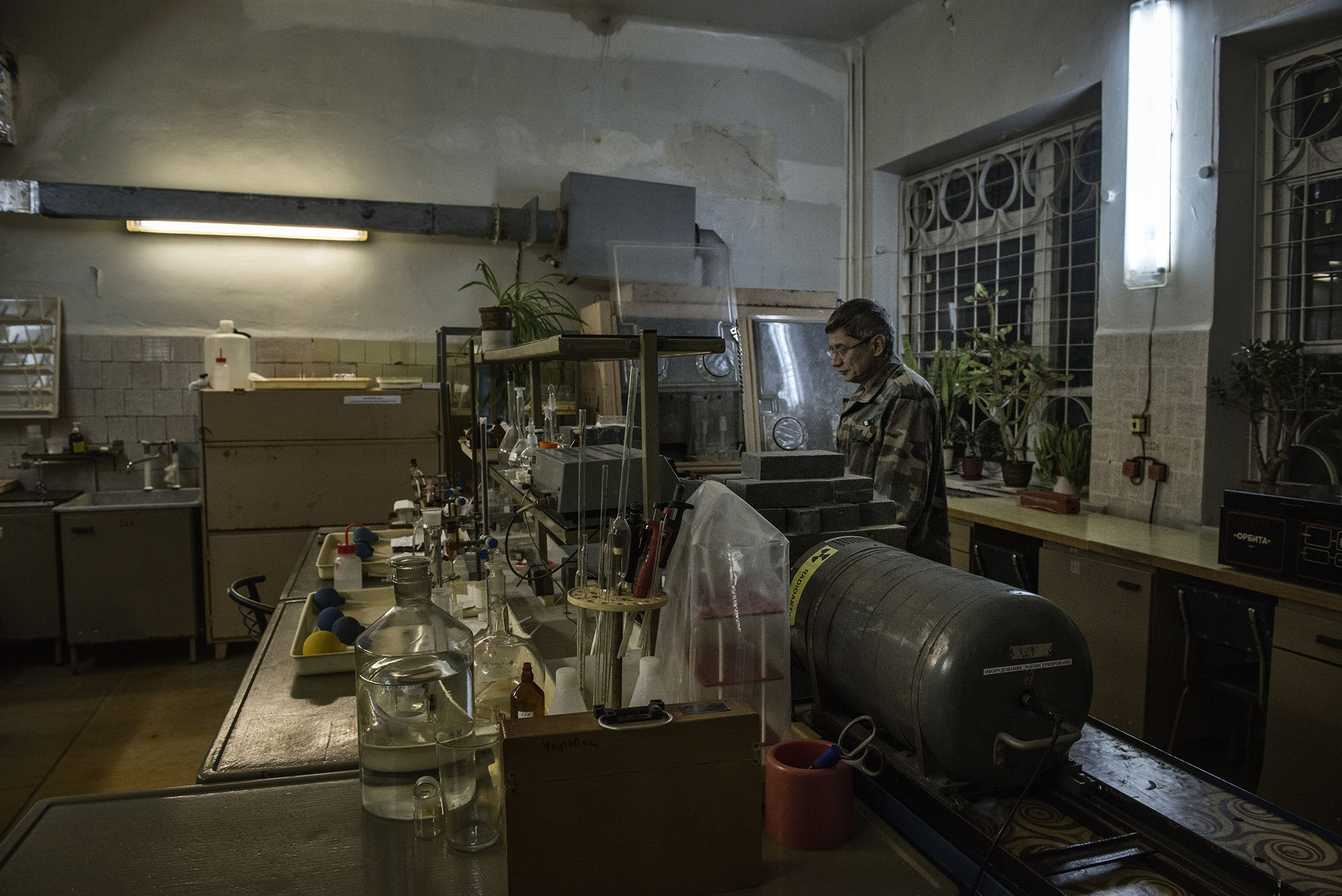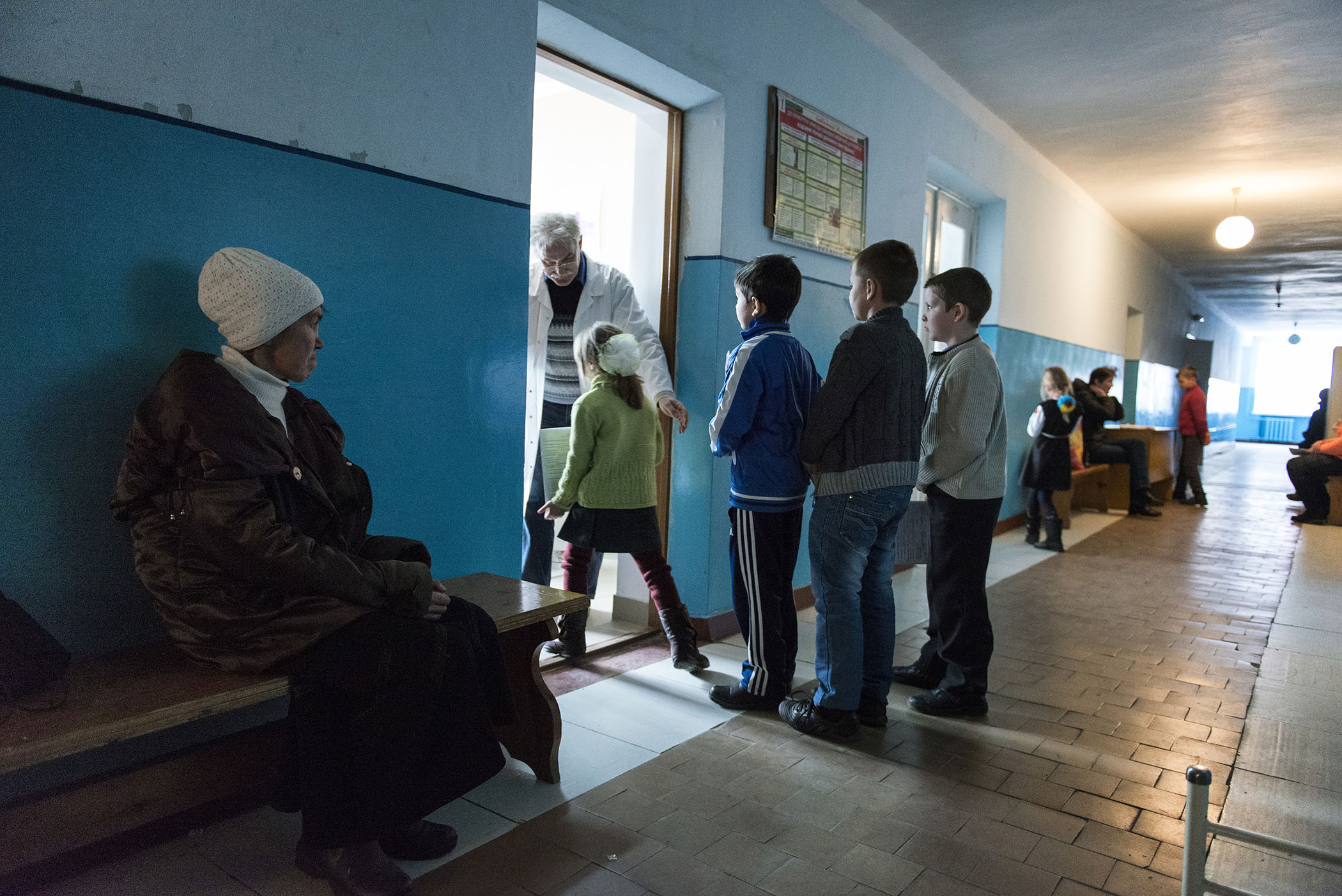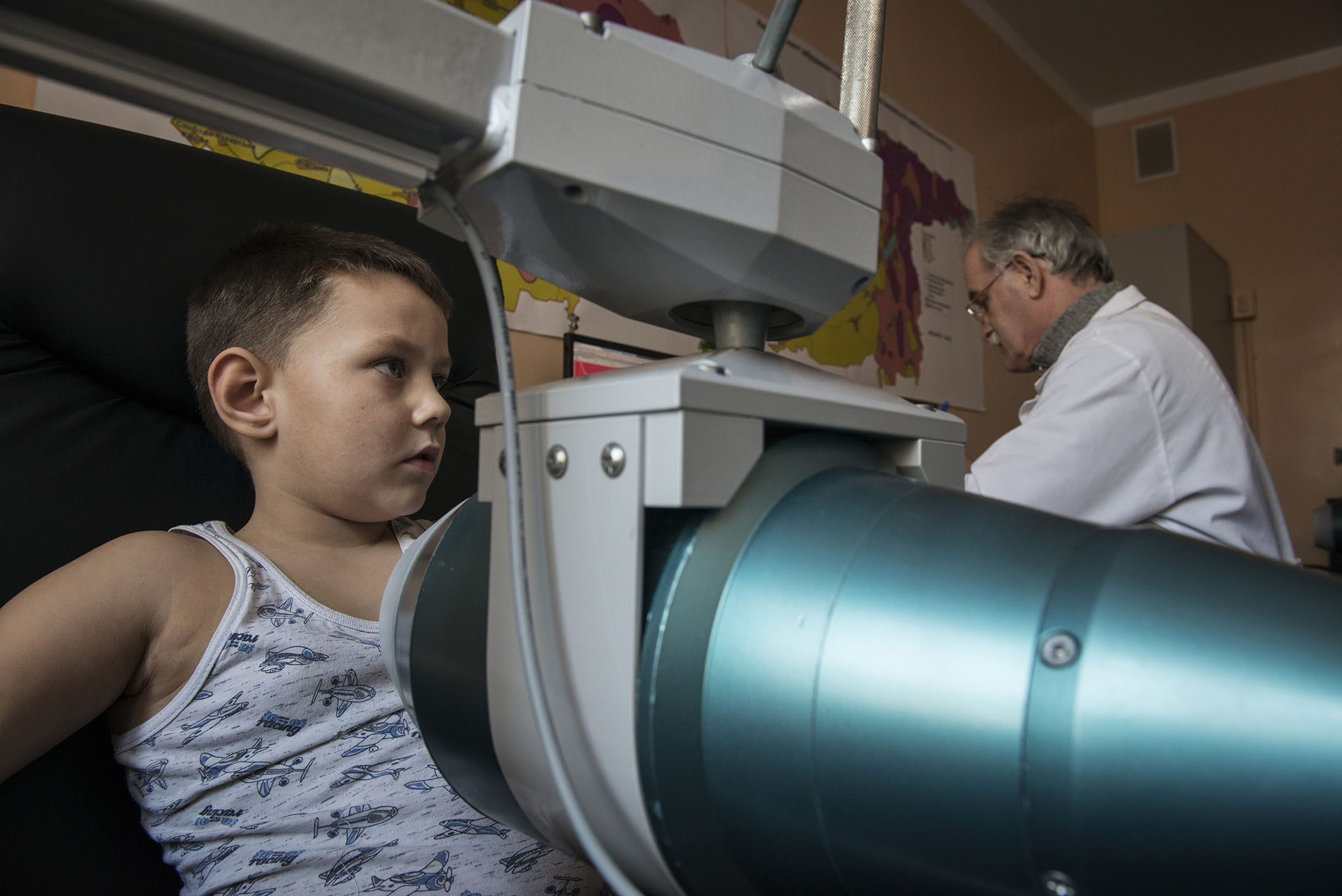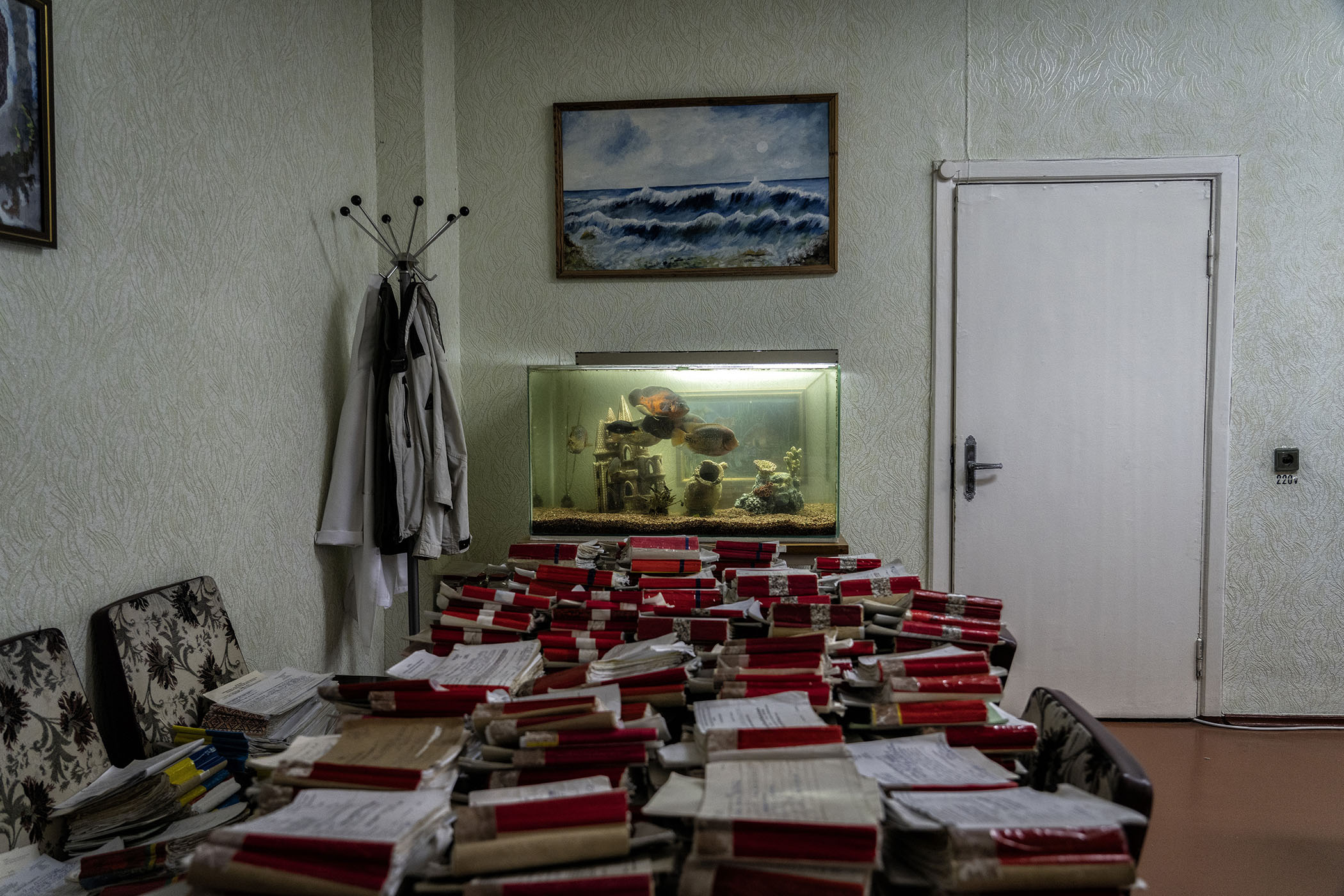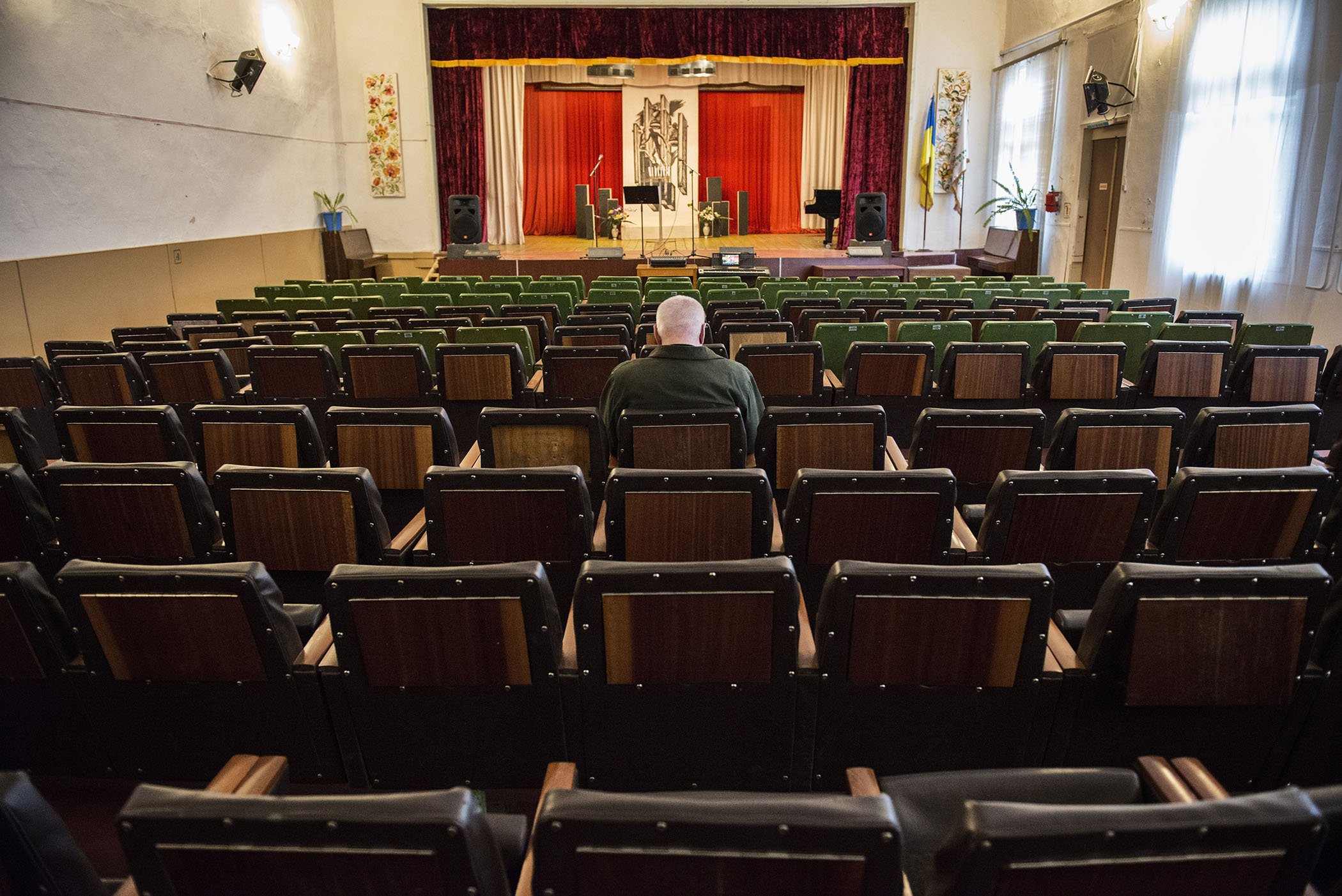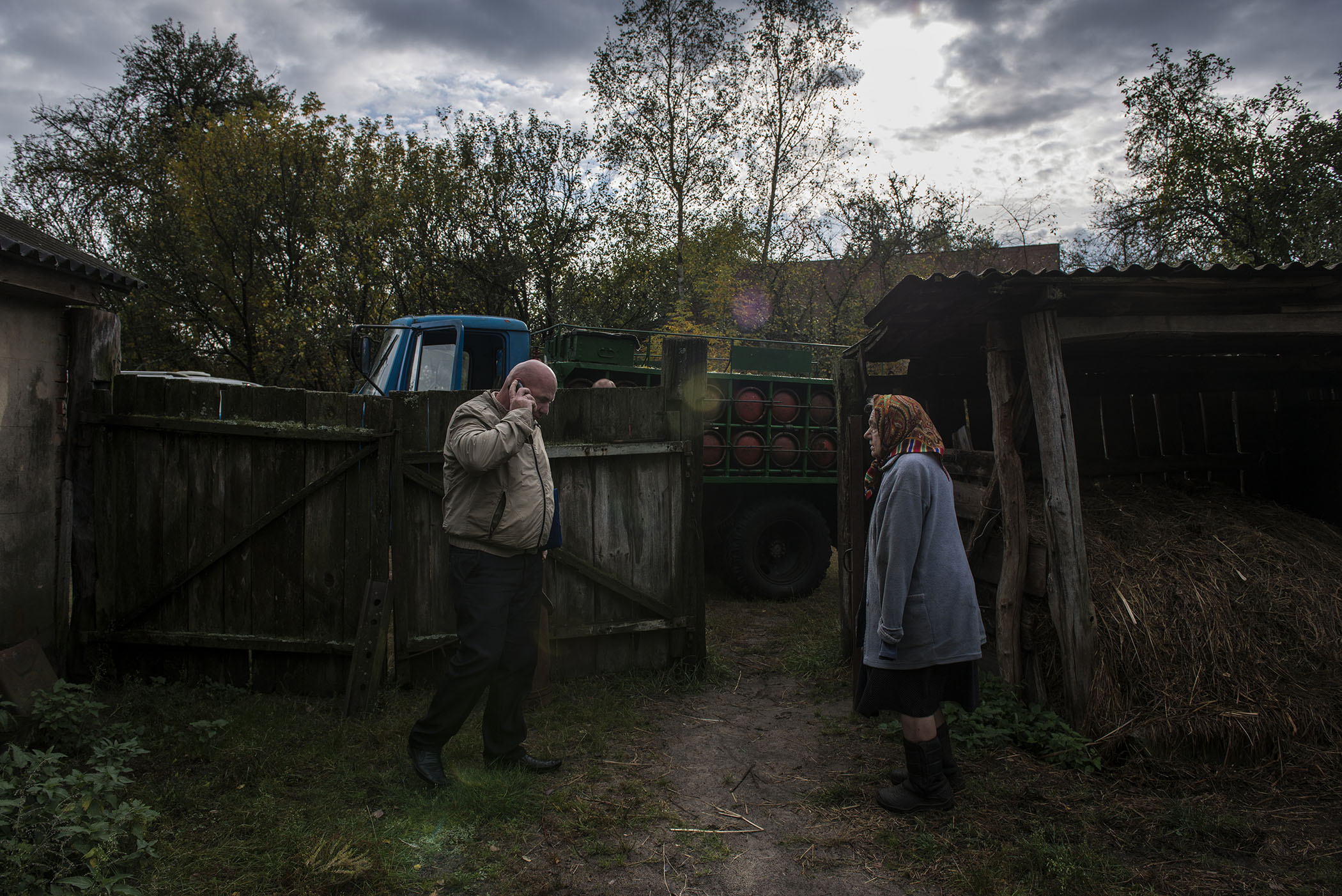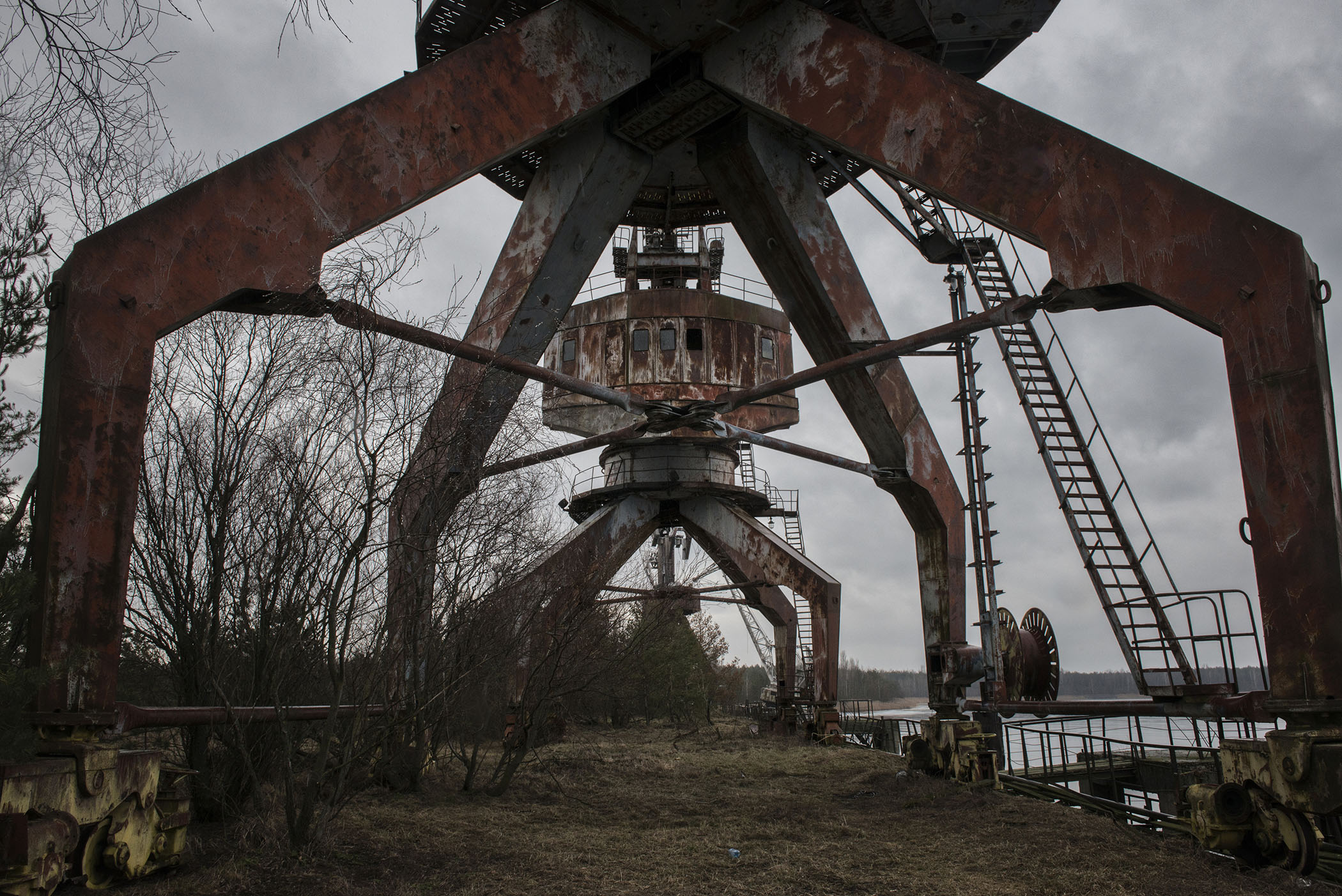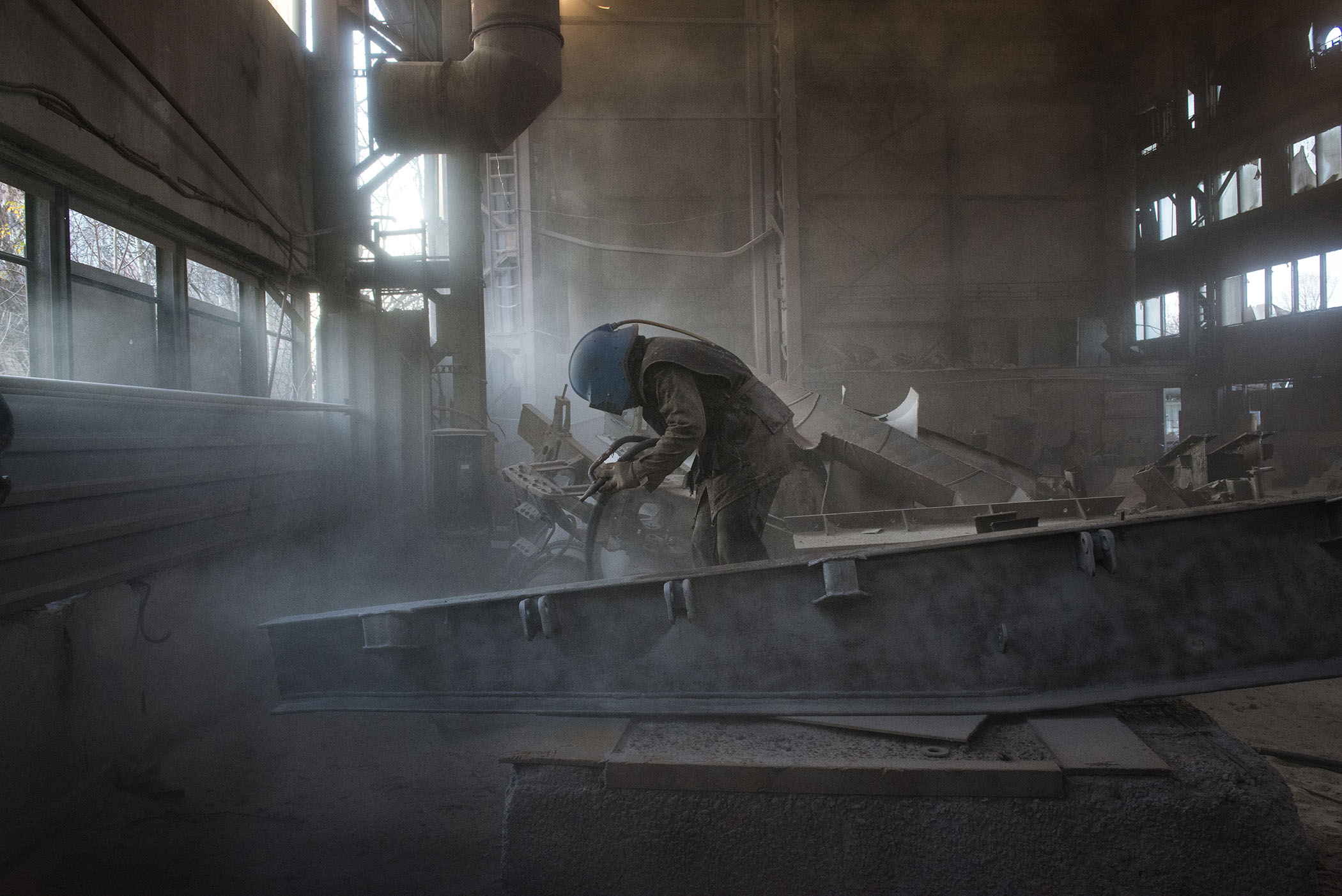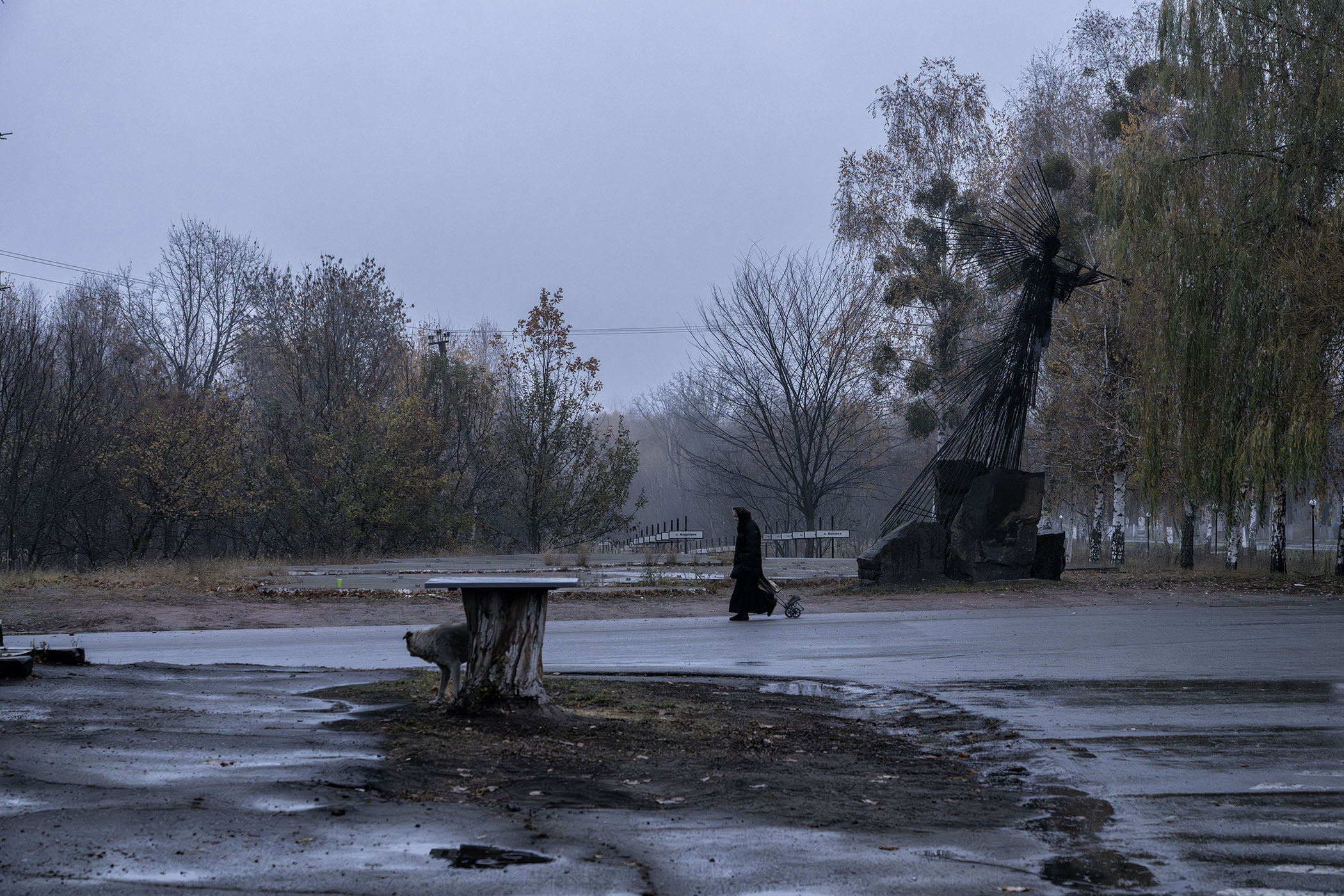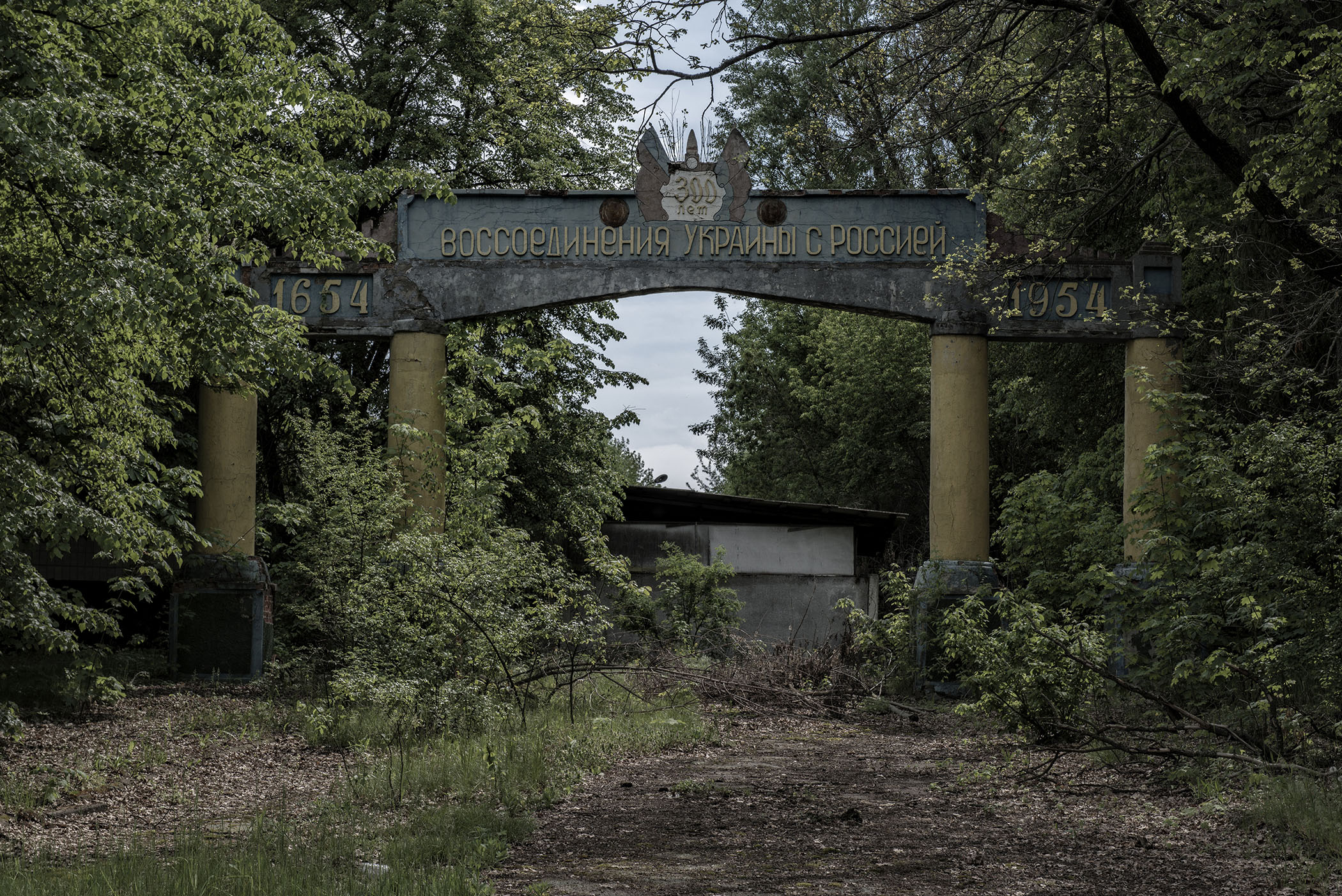On April 26, 1986, at 1:23 a.m. reactor number four of the Chernobyl nuclear power plant, exploded. It was the worst technological catastrophe of the modern era, changing the lives of millions of people. The explosion released tons of radioactive dust into the air, which contaminated both hemispheres of our planet. Almost all of Europe was affected and 65 million people were contaminated. The most contaminated areas spanning 260 thousand square kilometers of territory (almost as large as Italy) will return to normal background levels of radiation in about two hundred thousand years.
After the Chernobyl nuclear accident, a 30-kilometer radius exclusion zone was created around the nuclear power plant. 116,000 people were evacuated and lost their homes, possessions, jobs, along with their economic, social and family ties. Dozens of villages were buried forever. But the zone, which was supposed to be a dead zone, never really was.
The ferris wheel now engulfed by undergrowth as nature reclaims the abandoned town of Pripyat, in the Chernobyl exclusion zone.
Workers at the Chernobyl nuclear power plant inside a corridor in block number 3.
There is life inside the zone and thousands of people cross the radiation boundary every day. Today 4,000 people live in the city of Chernobyl. They are the military and police personnel to who control access to the zone and the operators of the reactors that are still not decommissioned. There is also all the staff needed to run the area, including office, canteen, and supermarket staff, hospital, scientific laboratory and post office staff, etc. There are still some resettlers, local residents who never wanted to leave their homes. Chernobyl looks like a normal Ukrainian town with the main services. That was before the war with Russia, now the zone has totally changed.
Freshly painted nuclear radition warning signs ready for distribution inside the Chernobyl exclusion zone.
Family photographs on a wall in an abandoned house in the village of Paryshev.
The gatekeeper inside the entrance checkpoint in the ghost town of Pripyat.
On February 24, 2022, Russia invaded Ukraine, occupying the Chernobyl exclusion zone on day one and isolating it from the rest of the world. For more than a month the Chernobyl power plant remained in the hands of the Russians, until March 31 when the Russian troops began to withdraw. During that time life totally changed for the residents of Chernobyl. The Russians left devastation and death behind them. Following the retreat of the Russians, the zone became a military zone with no access to anyone. Today the Chernobyl exclusion zone is fully militarized and mined to prevent a new attack by Russia. The work of workers in the zone flows as usual, but their lives have changed forever.
The post office in the town of Chernobyl in the exclusion zone, Ukraine, 2017
A snarling fox roaming the streets of of Pripyat.
Tourists in the control room of reactor number 1, Chernobyl nuclear power plant, Chernobyl exclusion zone, Ukraine, 2016
A tourist shop selling souvenirs about Chernobyl at the Dytiatky Check Point.
The post office in the town of Chernobyl in the exclusion zone, Ukraine, 2017
Yitz Twersky and Rabbi Leibel Sirkes in front of the former synagogue, Chernobyl City, Chernobyl exclusion zone, Ukraine, 2017
Eugene Knyazev while walking in the ghost town of Pripyat, Chernobyl exclusion zone, Ukraine, 2017
A gate keeper raises a barrier to let a vehicle pass at the entrance to the city of Pripyat.
Today after almost 4 years of war the situation remains is very difficult for the local population. In addition to facing radiation and war, the population must also deal with a lack of resources. Even before the war, the Ukrainian healthcare system was in a difficult condition, today there is a lack of resources to adequately treat those suffering from the consequences of Chernobyl. As a result, the lives of the people of Chernobyl are today worse than ever because the consequences of the Chernobyl disaster remain.
The road from Chernobyl to Pripyat lined with trenches and road blocks.
At the present time nine million people in Belarus, the Ukraine and western Russia continue to live in areas with very high levels of radioactivity, consuming contaminated food and water. Eighty percent of the population of Belarus, Western Russia and North Ukraine suffer from a variety of pathologies. After the Chernobyl disaster, in the contaminated areas there has been a huge increase in radiation-related tumors, malformations and an assortment of various radiation-related pathologies. And there will be still more effects to come among women who at the time of the disaster were under the age of six and are now starting to have children. Now we will see the effects of genetic mutation on new generations. Today, life for the local people goes on, and they must struggle with the terrible legacy of the Chernobyl accident, a legacy that will endure for millennia. 40 years after the accident, the story of Chernobyl is only beginning.
Workers inside the control room of reactor number 2, at the Chernobyl nuclear power plant.
The Duga military antenna, one of the last vestiges of the Cold War, Chernobyl-2.
A woman at a monument to soldiers killed during the current war with Russia in the radiation contaminated village of Sloboda Kharska.
A statue of Lenin.
Teachers and students take refuge in a shelter during an air raid alert in the radiation contaminated village of Radinka, situated few kilometres outside the Chernobyl exclusion zone.
A plinth where a statue of Lenin had stood before it was destroyed by Ukrainian army to erase symbols of Russian imperialism and reassert Ukrainian identity following the 2022 Russian invasion.
Vladik and Igor breaking an iced up puddle in the garden of their house in the radiation contaminated village of Radinka, situated few kilometres outside the Chernobyl exclusion zone.
A teacher takes a classroom lesson at the school in the radiation contaminated village of Radinka, situated few kilometres outside the Chernobyl exclusion zone.
Vladik and Igor standing in front of a picture of a birch trees in their school in the radiation contaminated village of Radinka, situated few kilometres outside the Chernobyl exclusion zone.
A scientist working in a laboratory.
Children waiting to be analysed for internal radioactive contamination by Professor Bandazhevsky's team at the Ivankiv hospital.
Igor at the Ivankiv hospital being analysed with a spectrophotometer to assess internal radiation contamination.
Medical records of Chernobyl hospital patients in the director's office.
A lone member of the audience waiting for the start of a concert in a small theatre at the House of Culture.
Maria Semenyuk, who died on 17 May 2016 at the age of 78, buys a bottle of gas (propane) from a vendor who sells throughout the Chernobyl exclusion zone.
Rusting cranes in the abandoned commercial port.
A wokrer sandblasting radioactive scrap metal in a warehouse where contaminated metals are recycled.
A resident walks through the main square passing the monument of the Third Angel, built to commemorate the 20th anniversary of Chernobyl disaster.
The entrance arch, overgrown by vegetation, of the abandoned city of Polesskoye.

